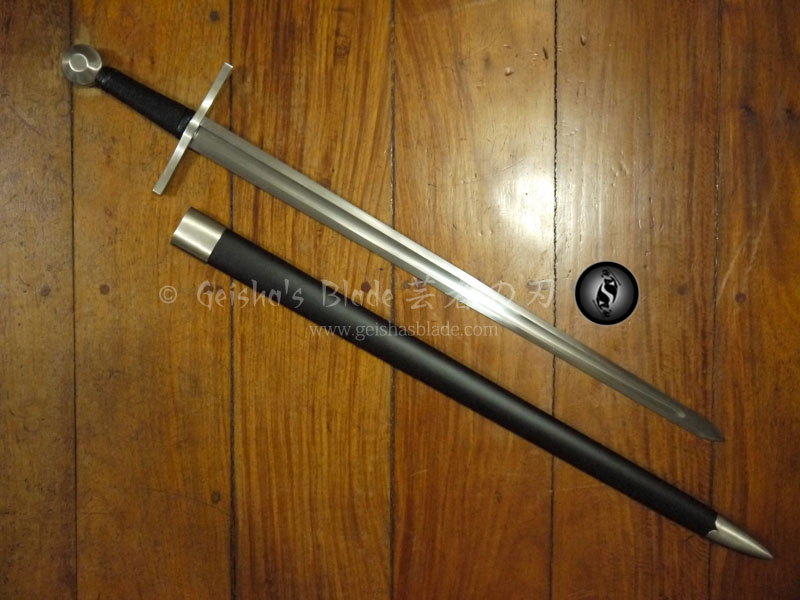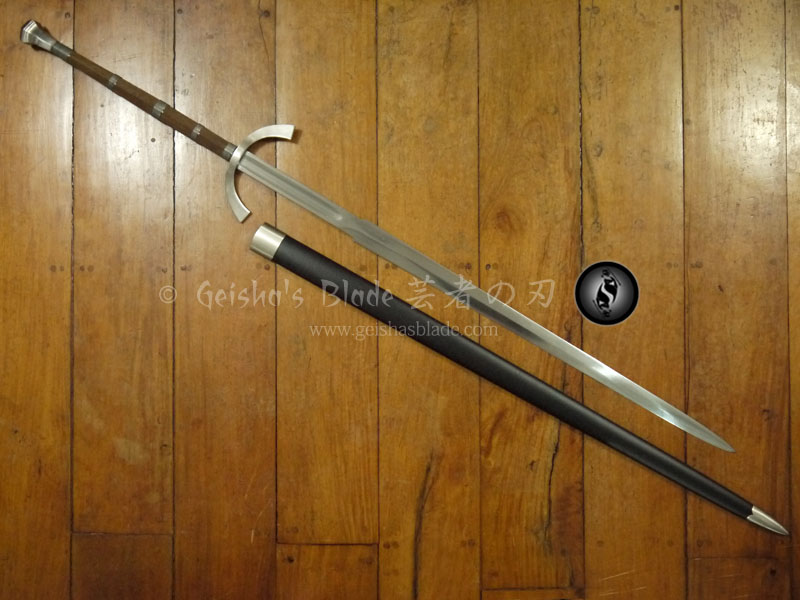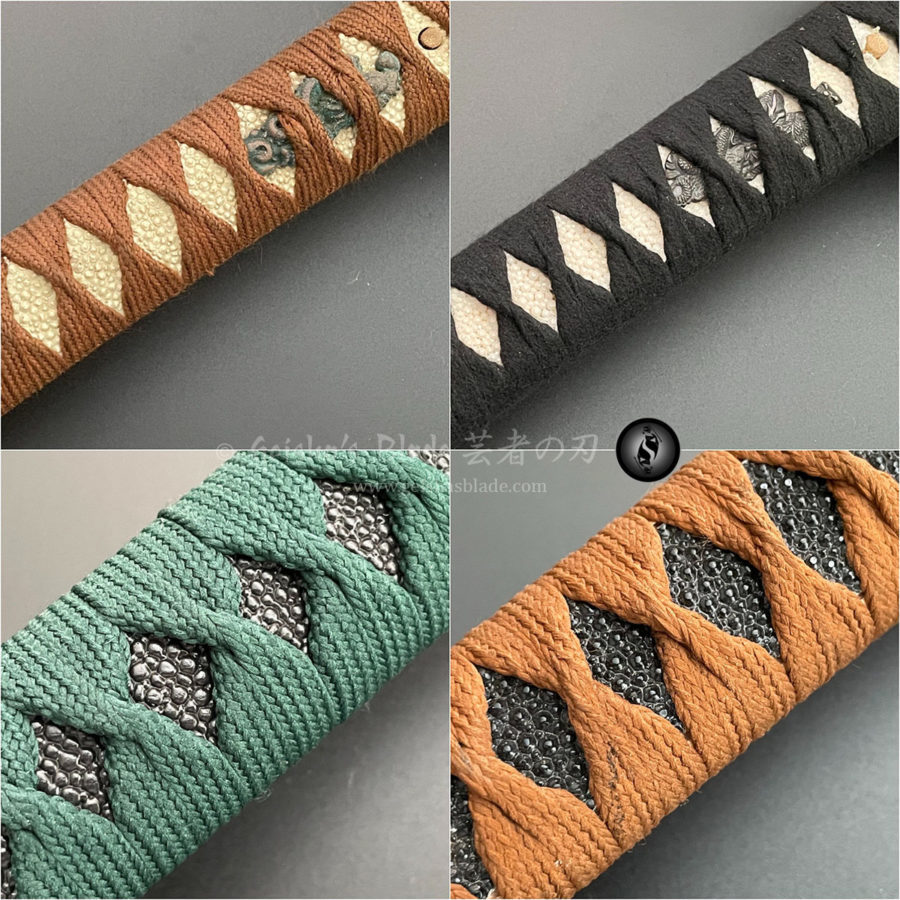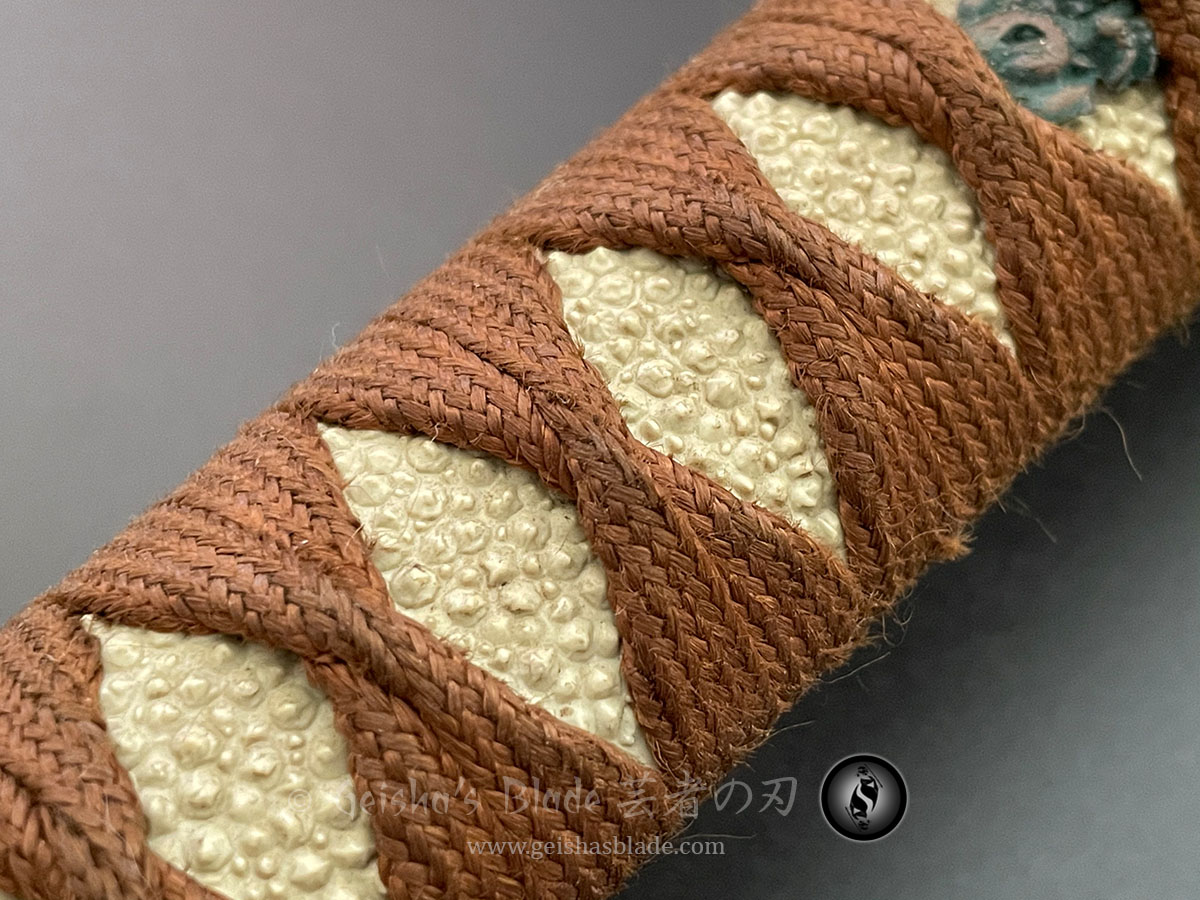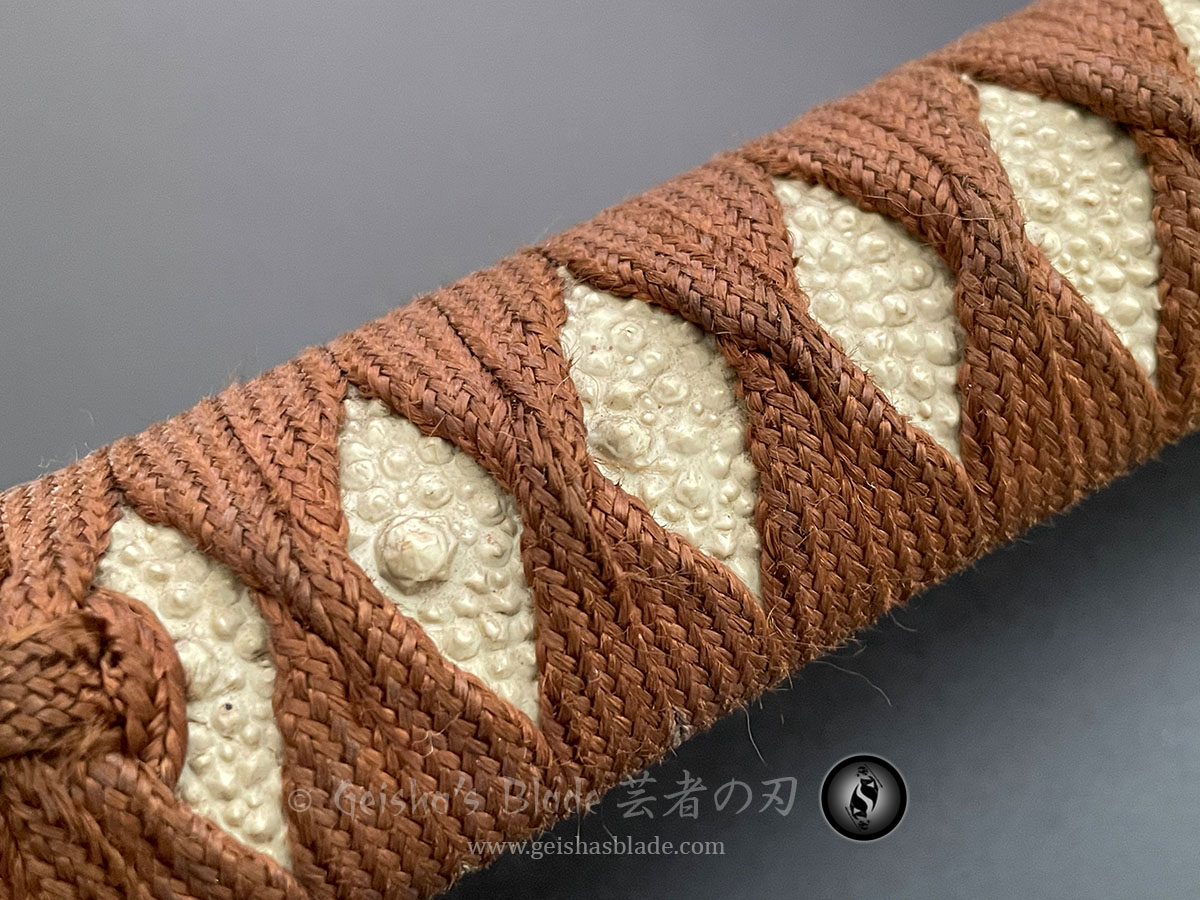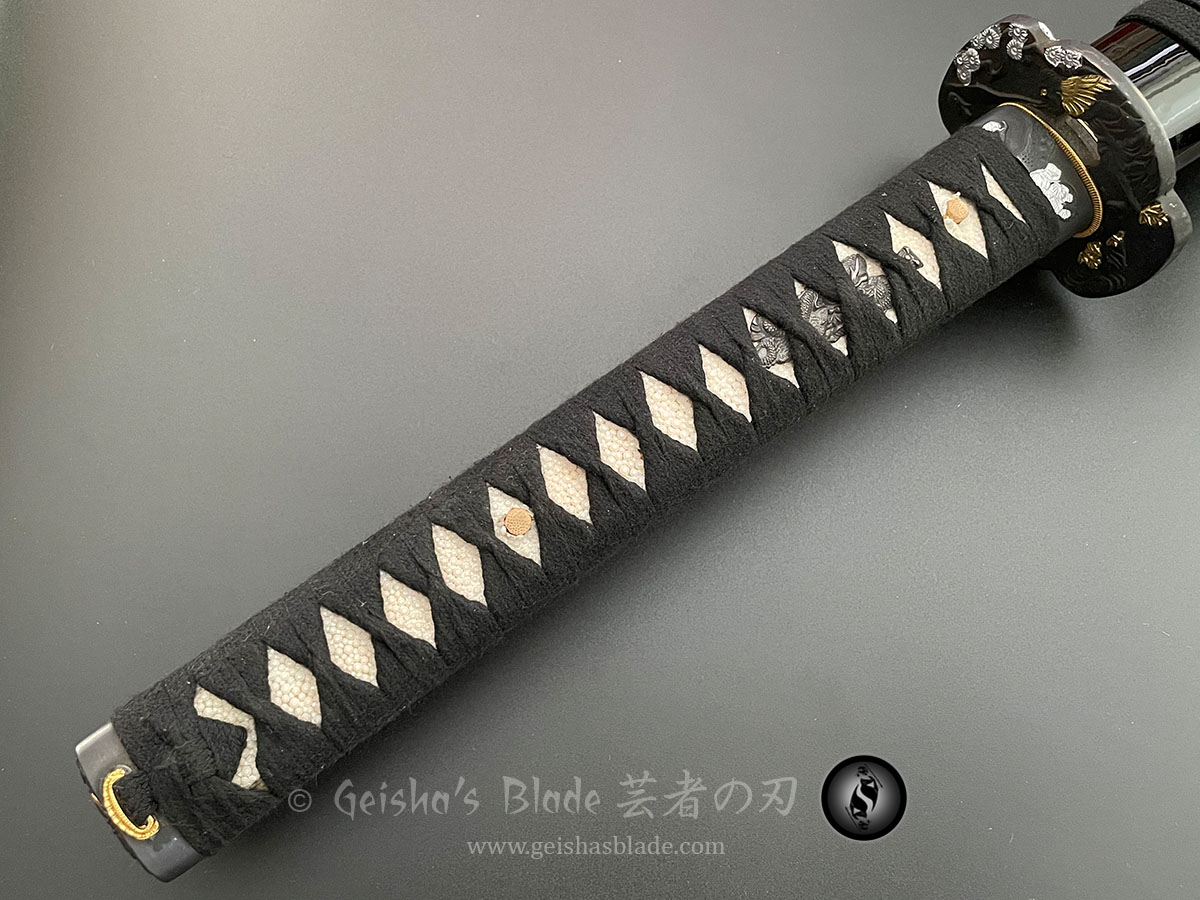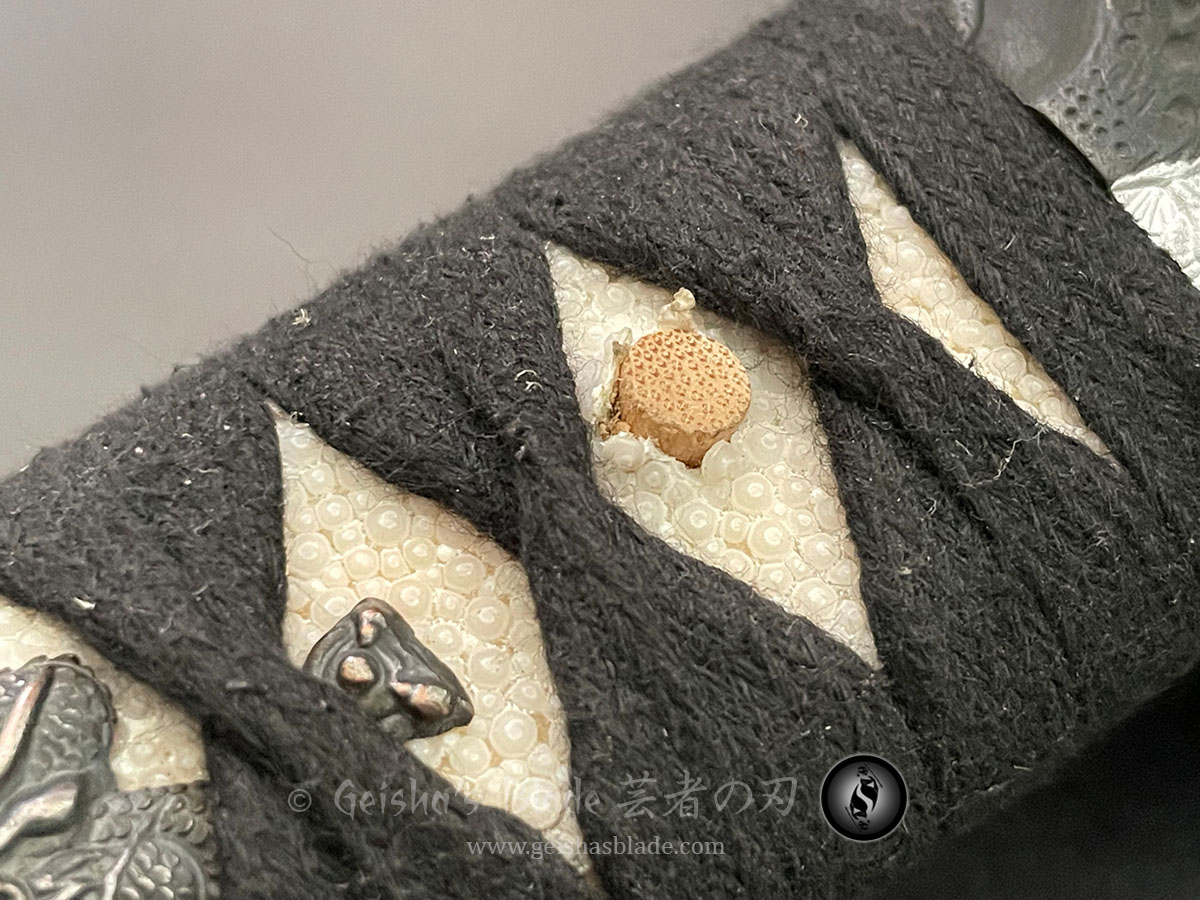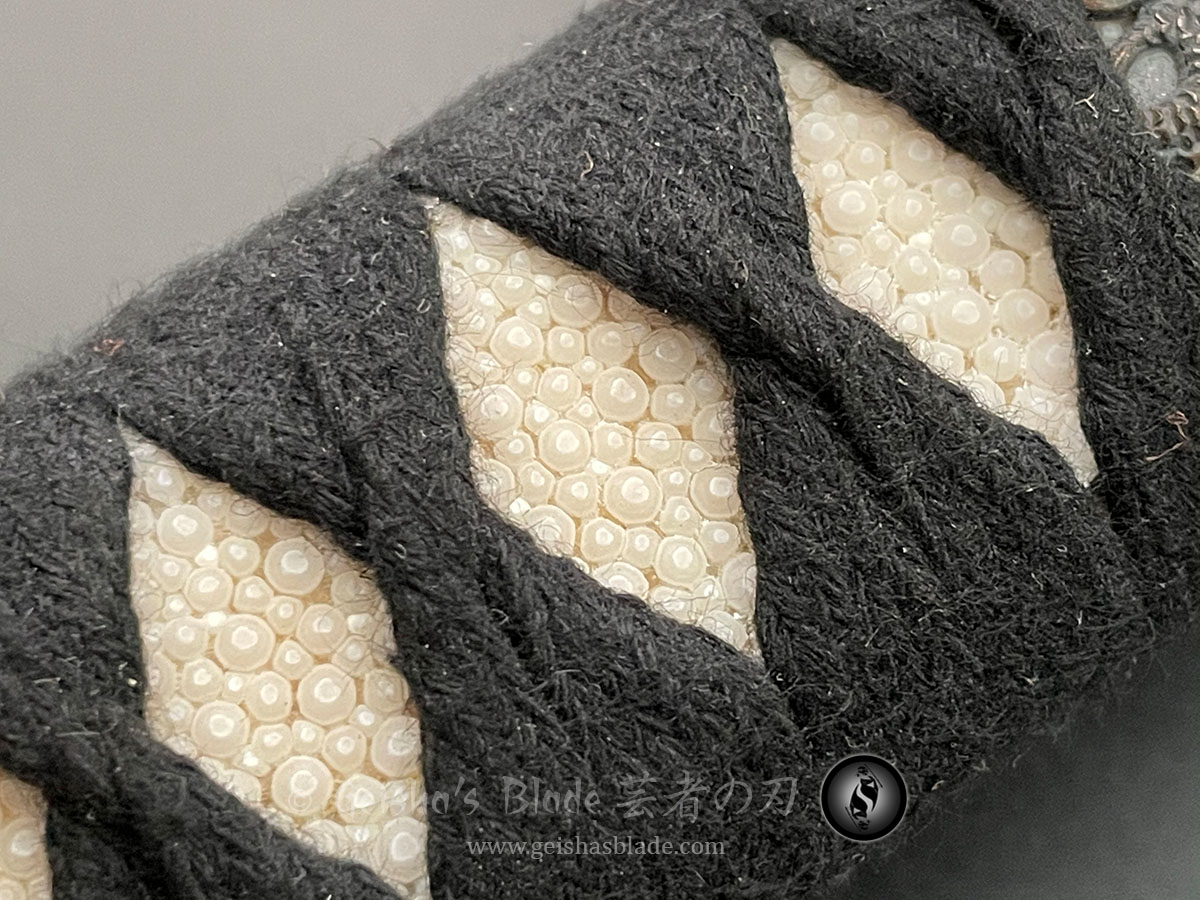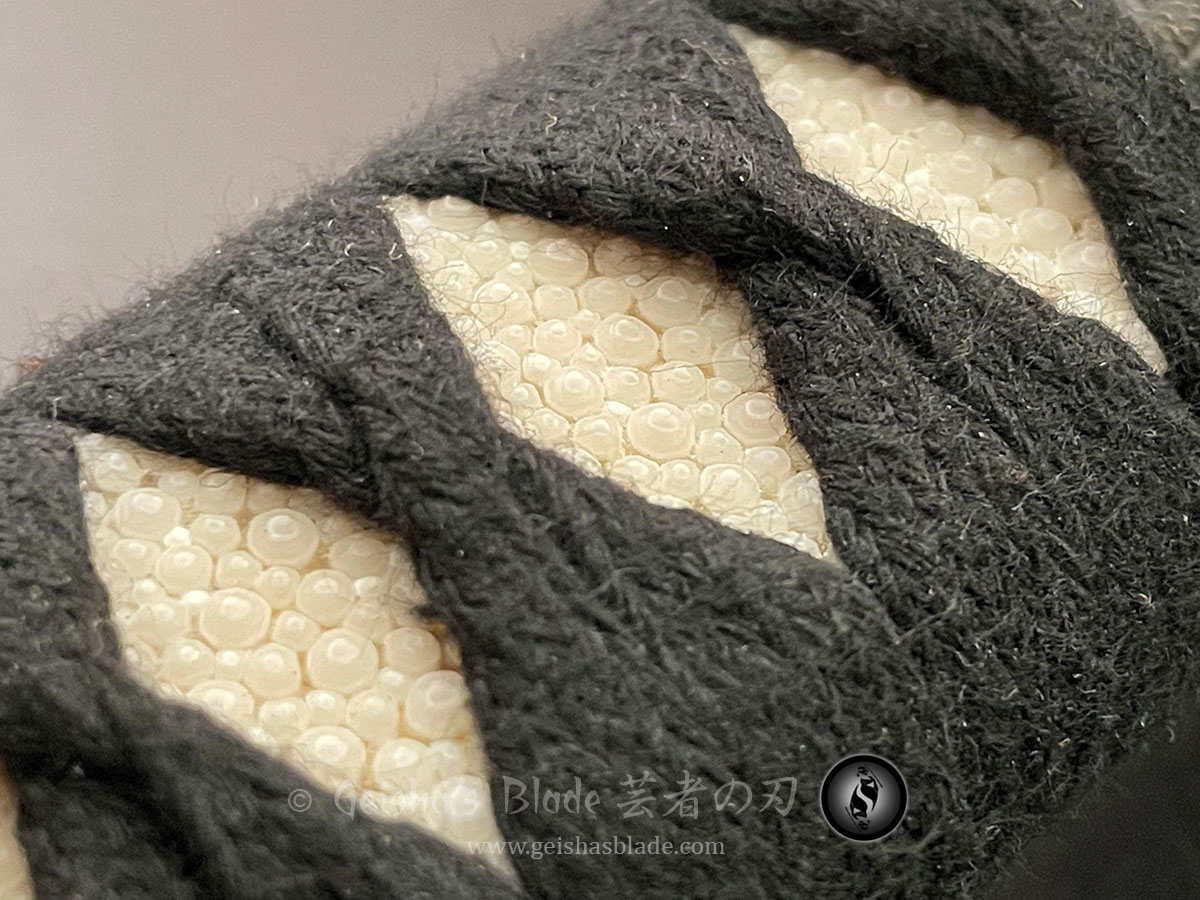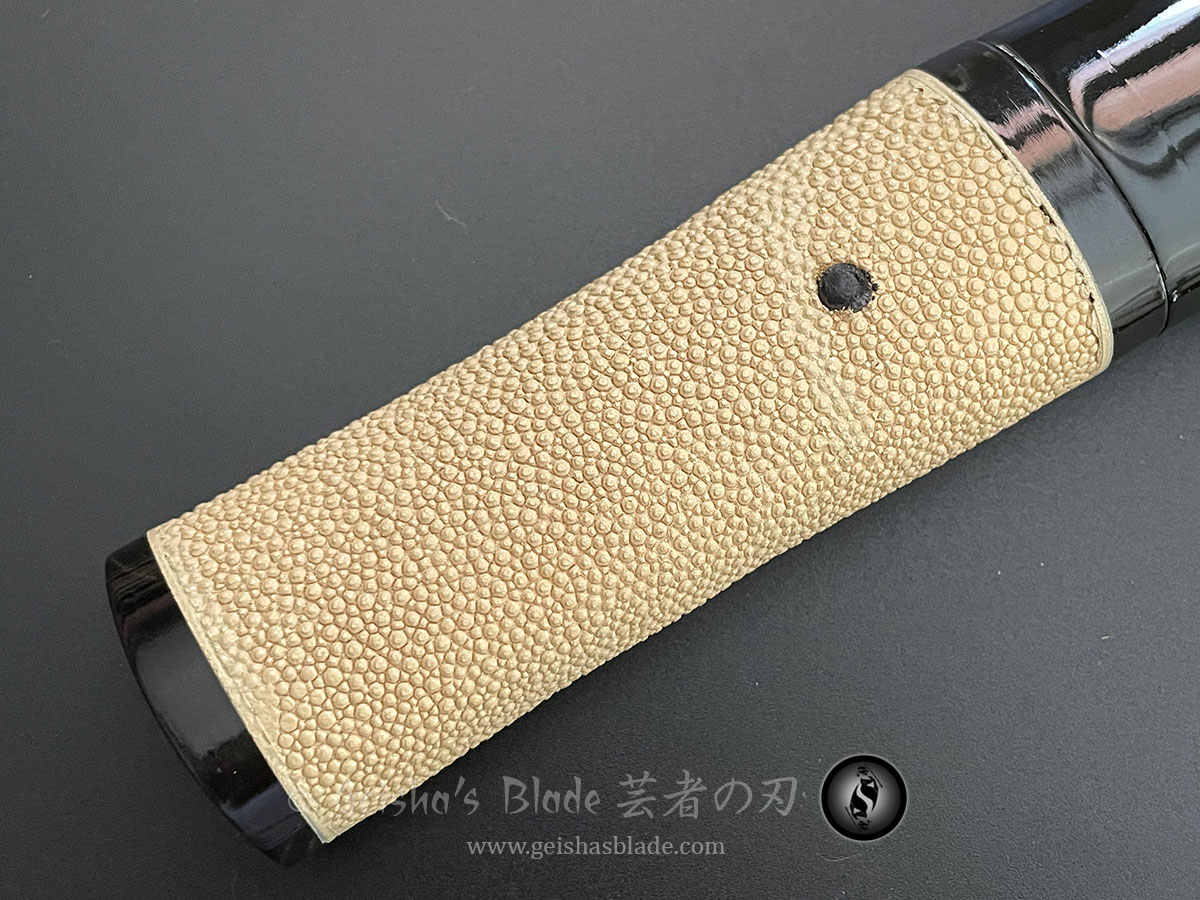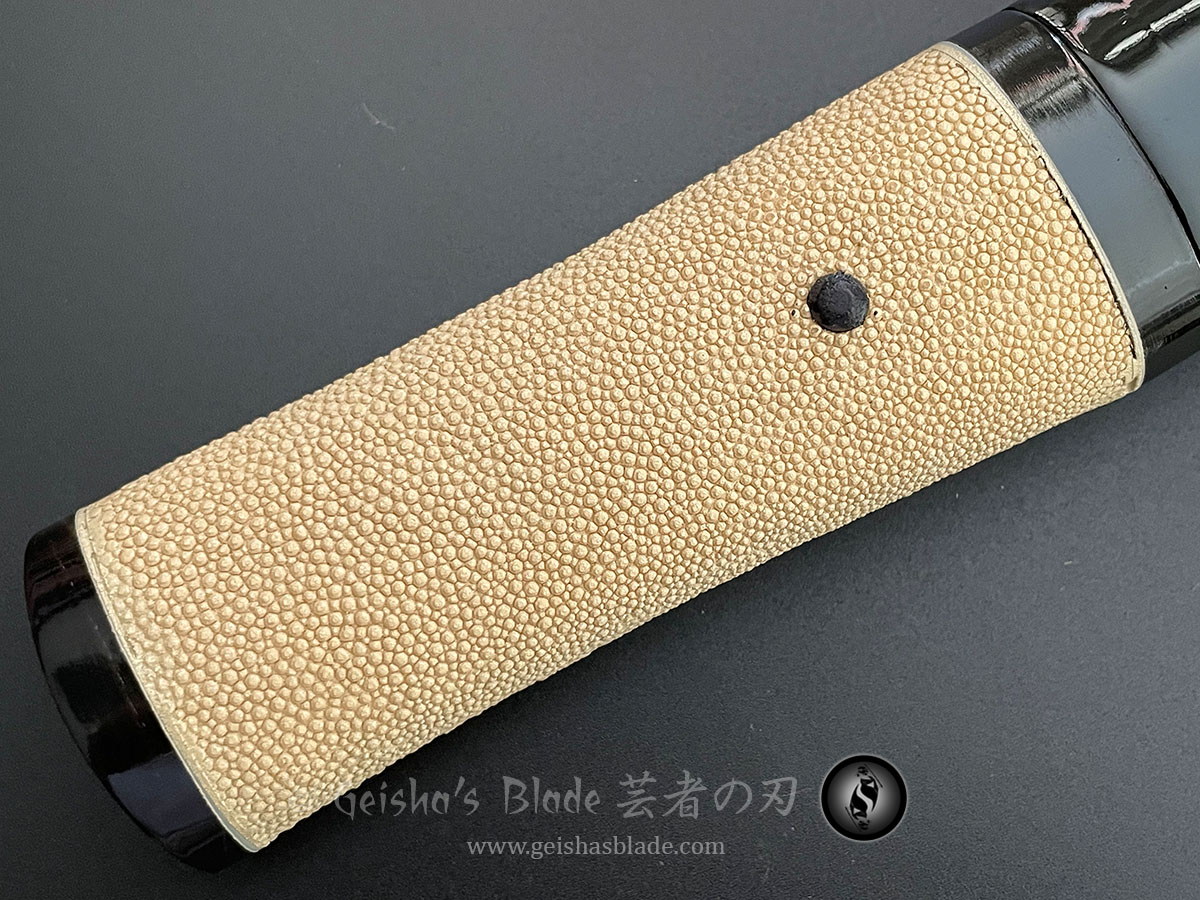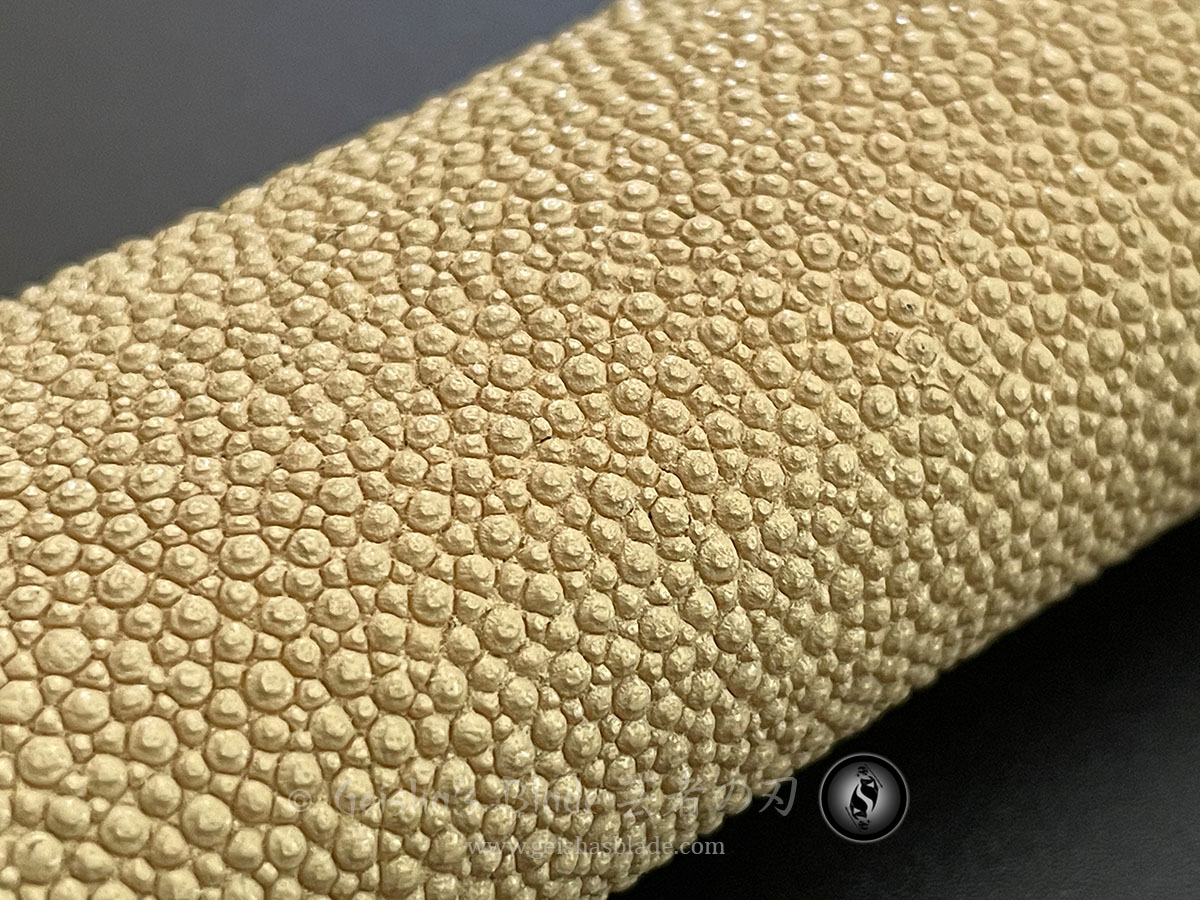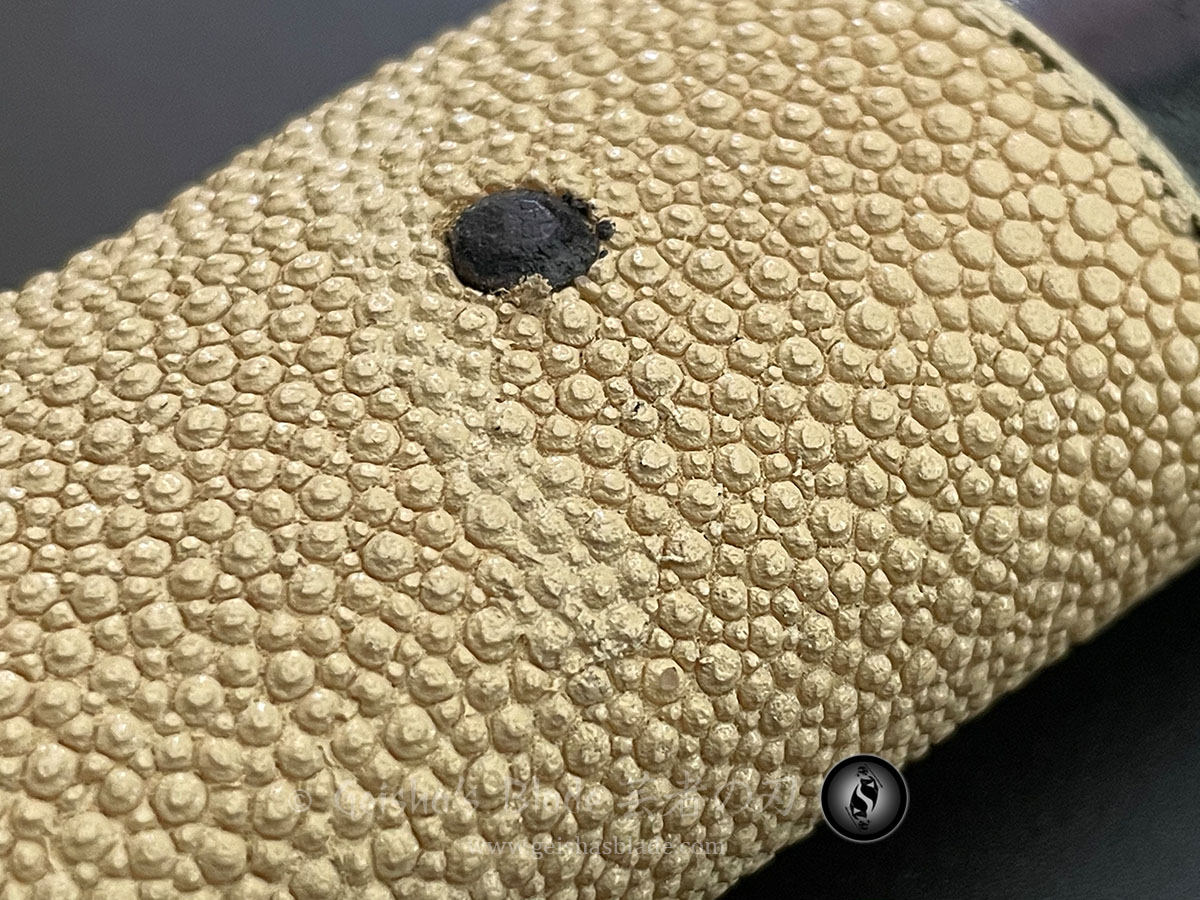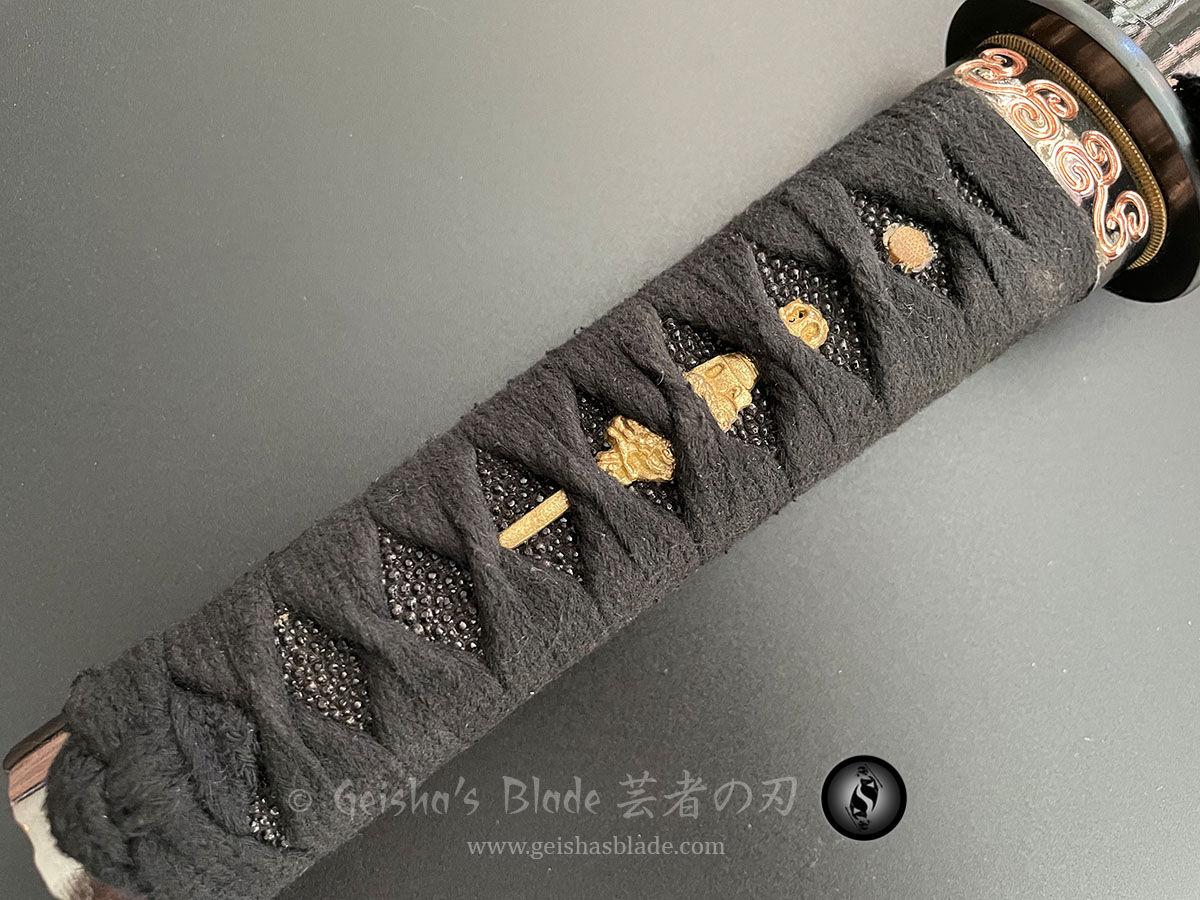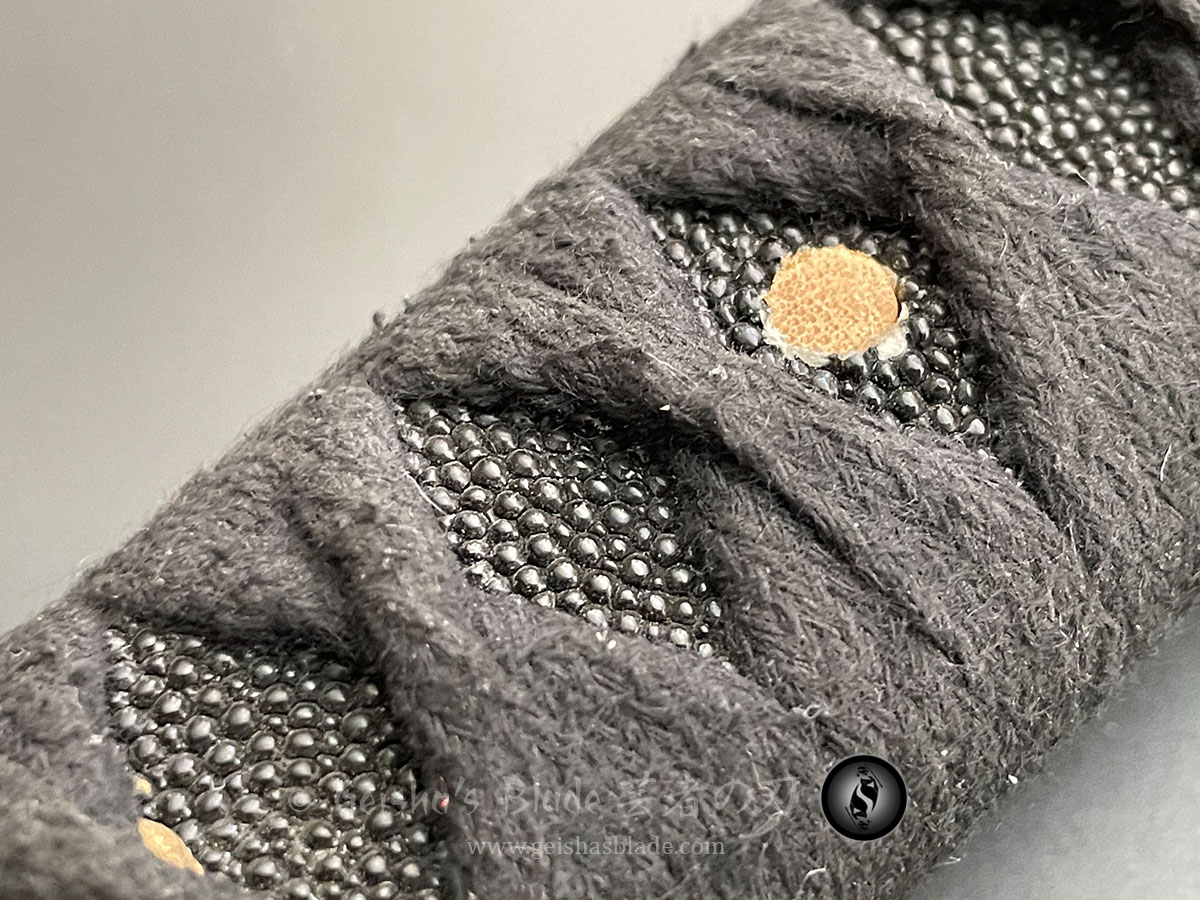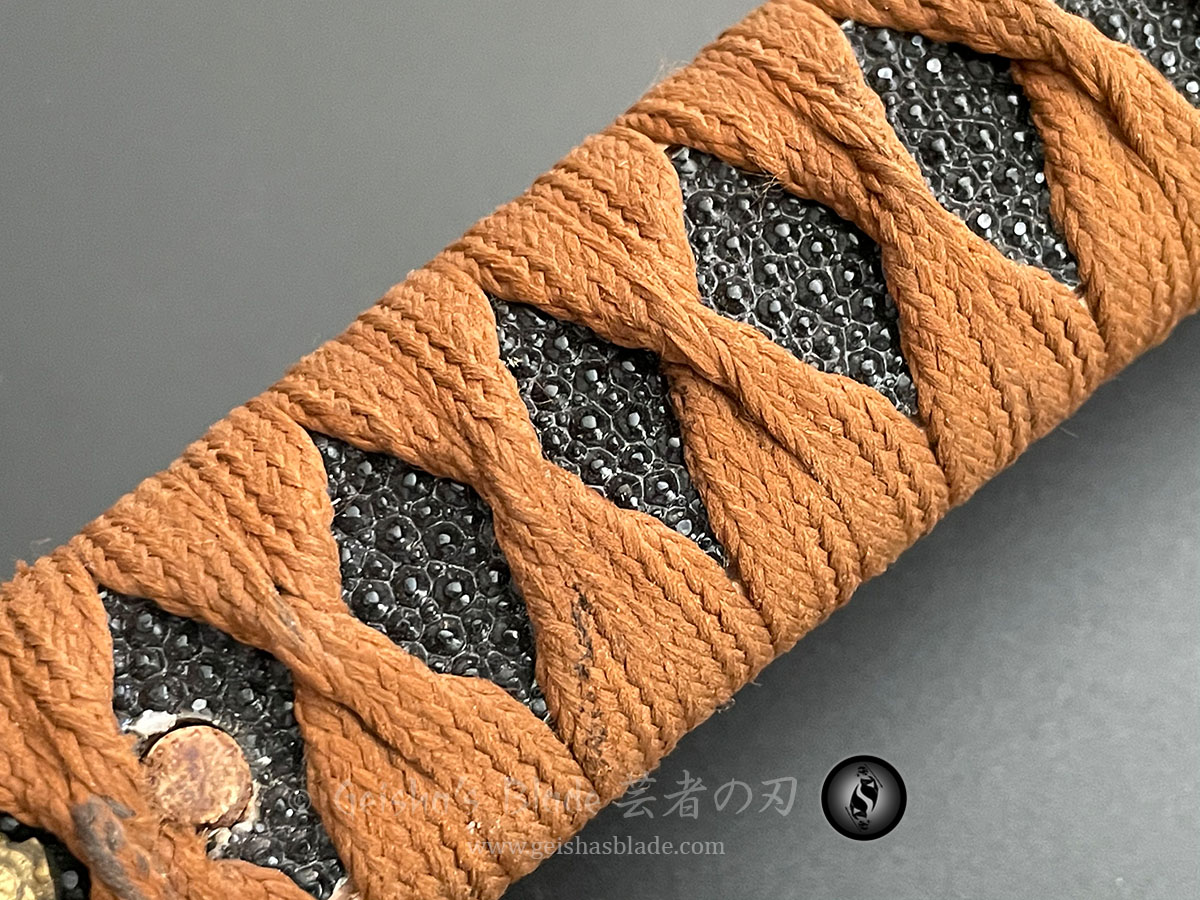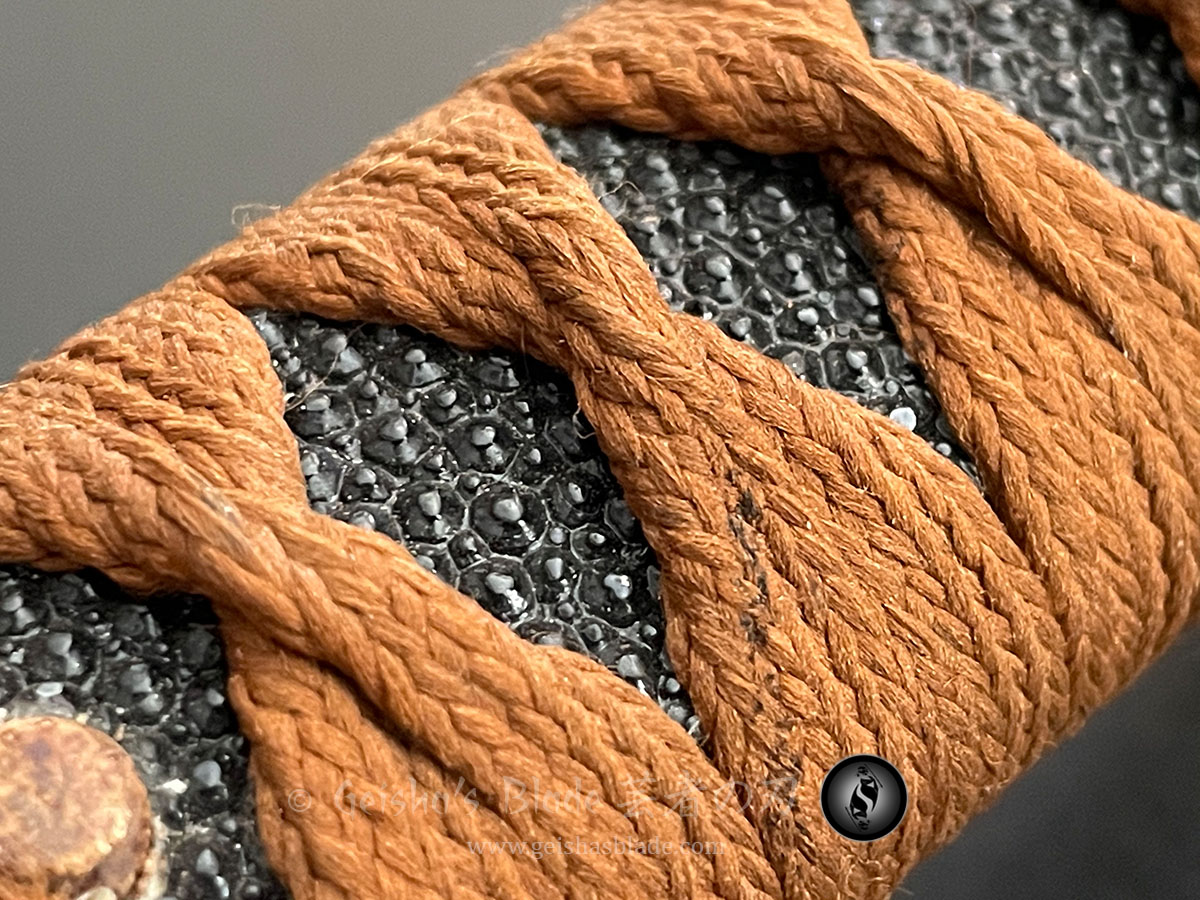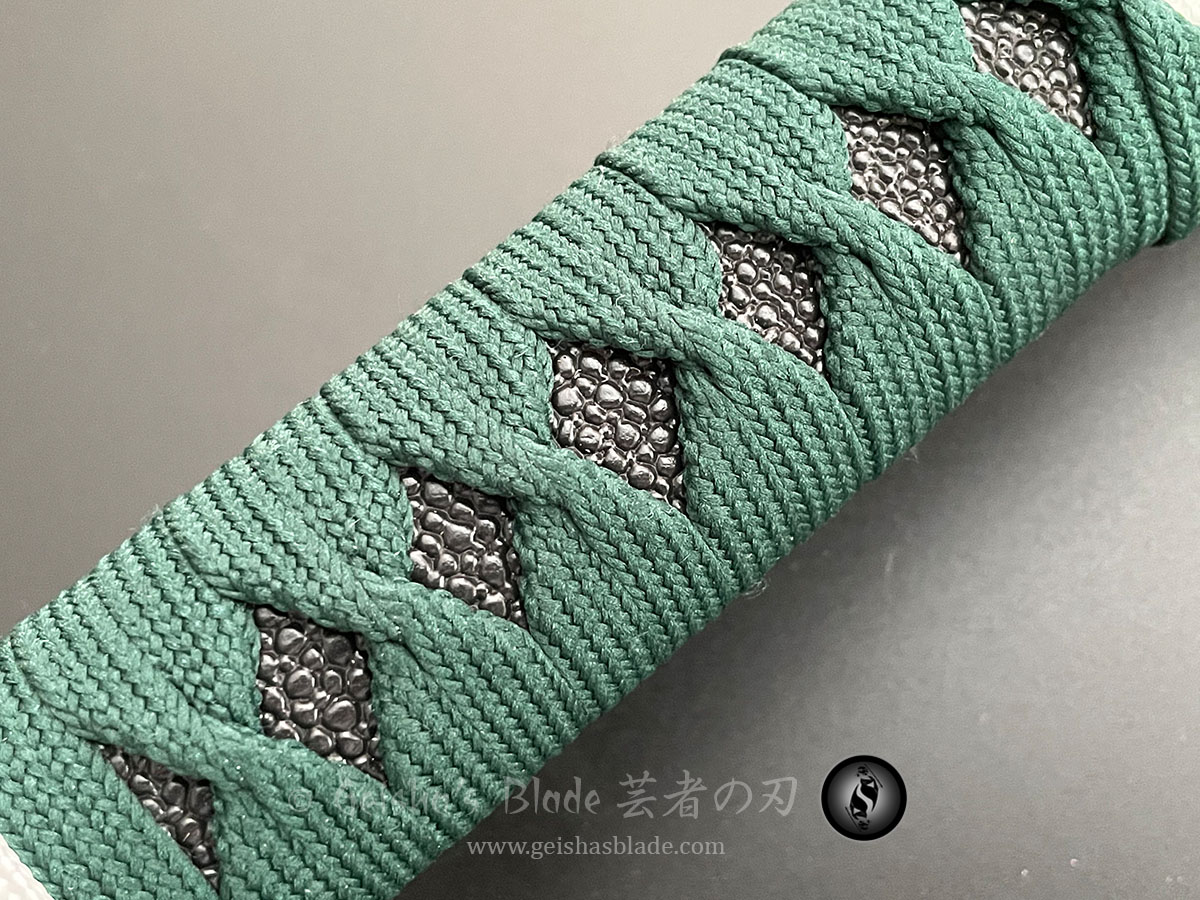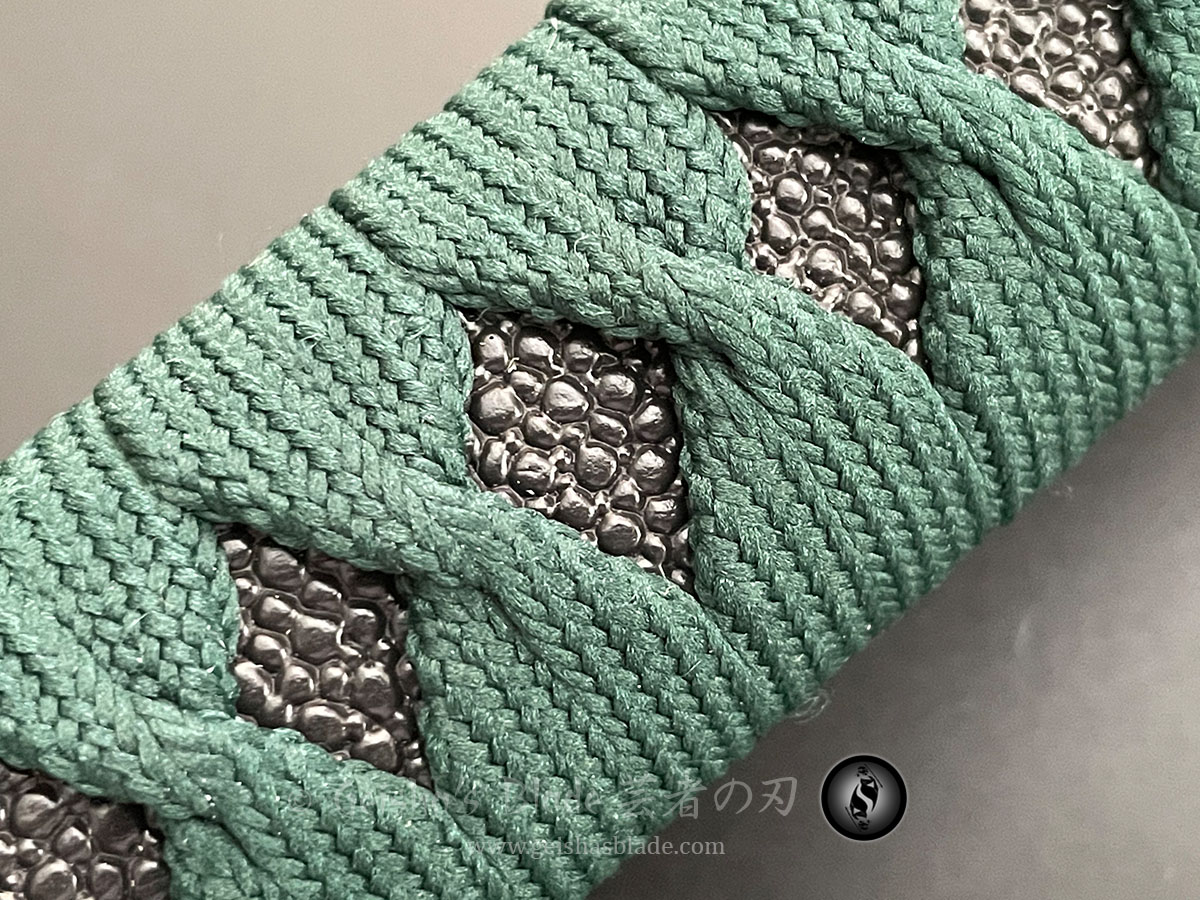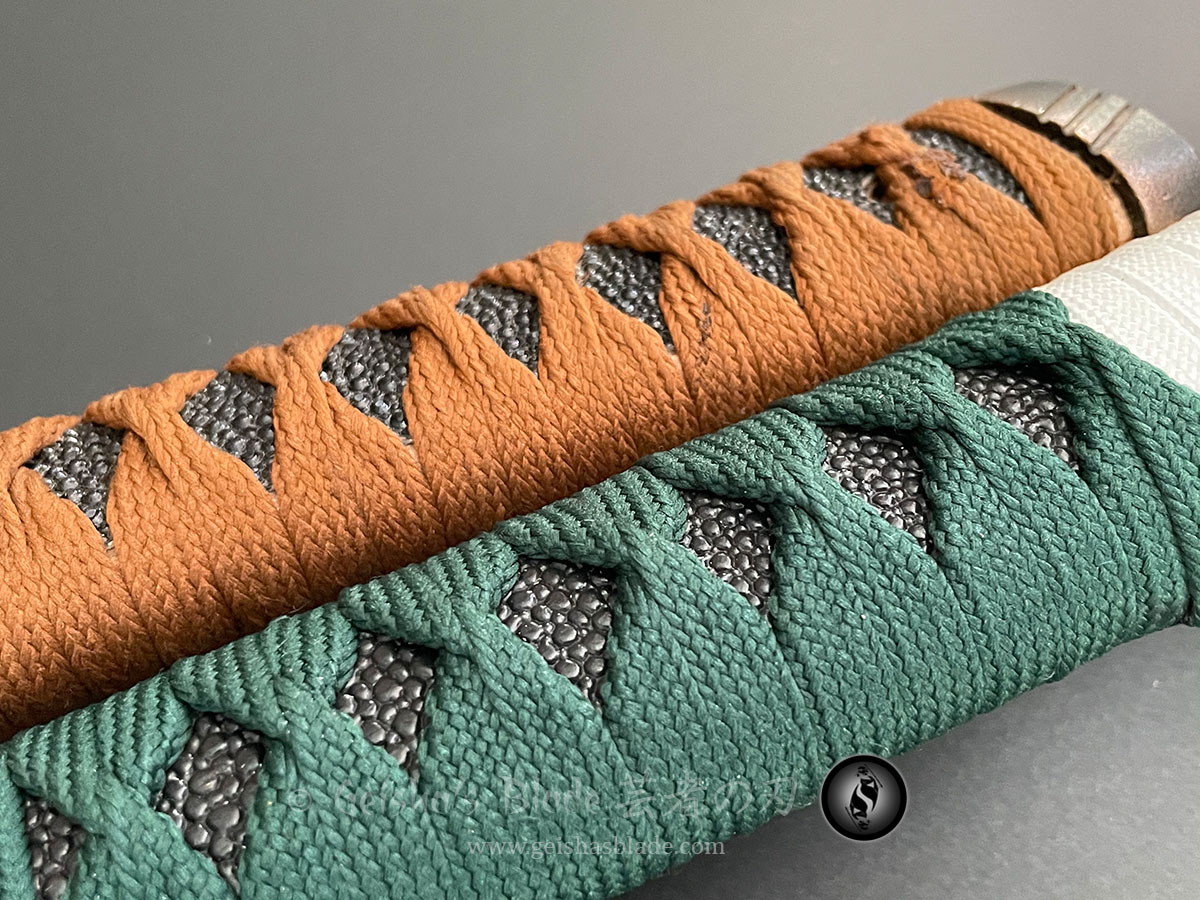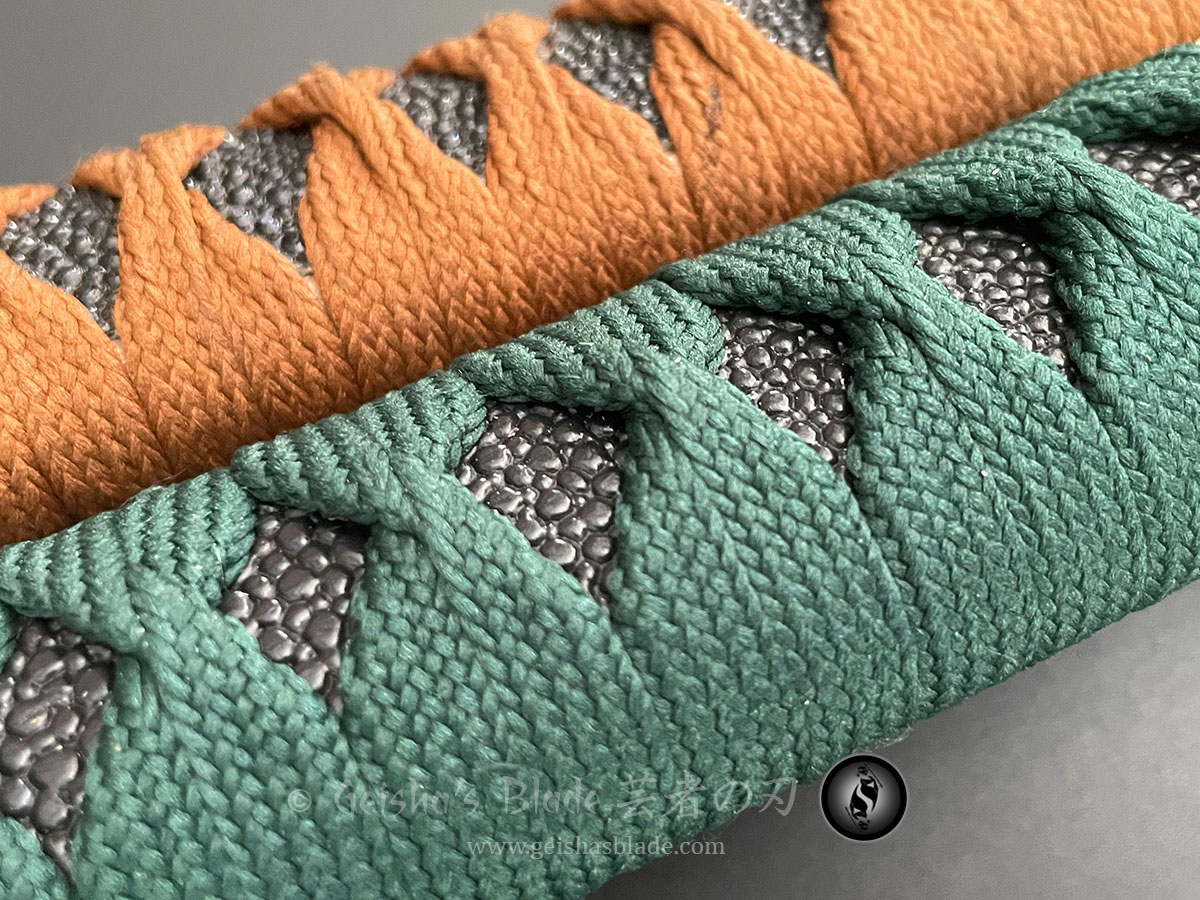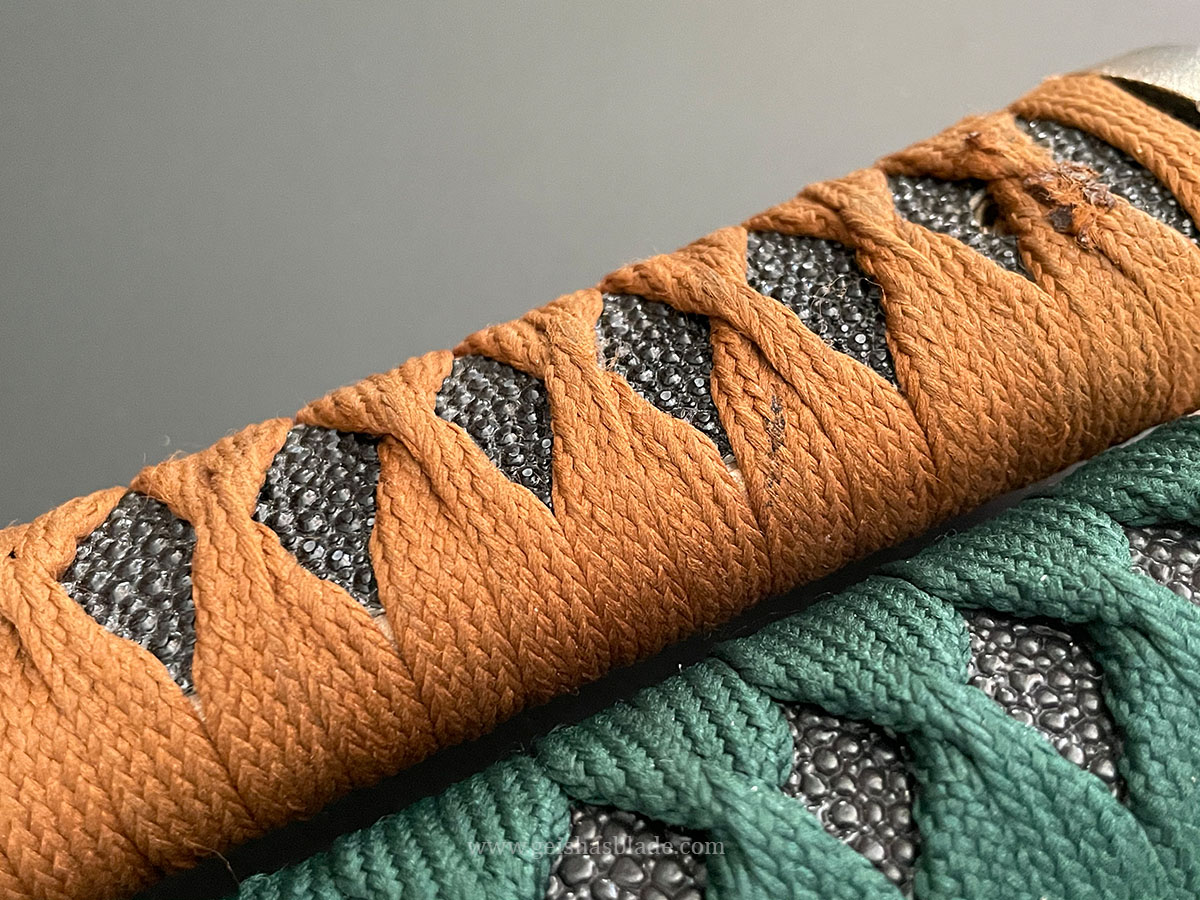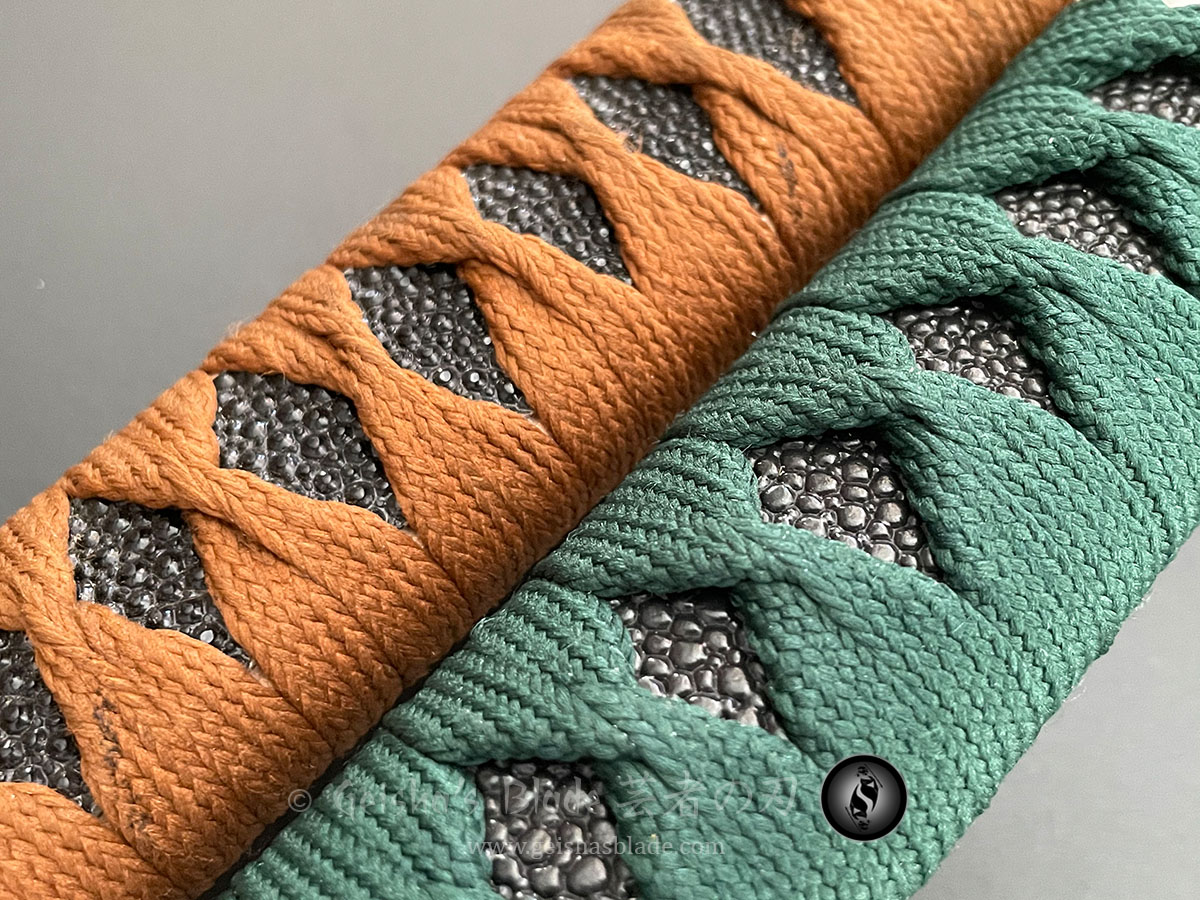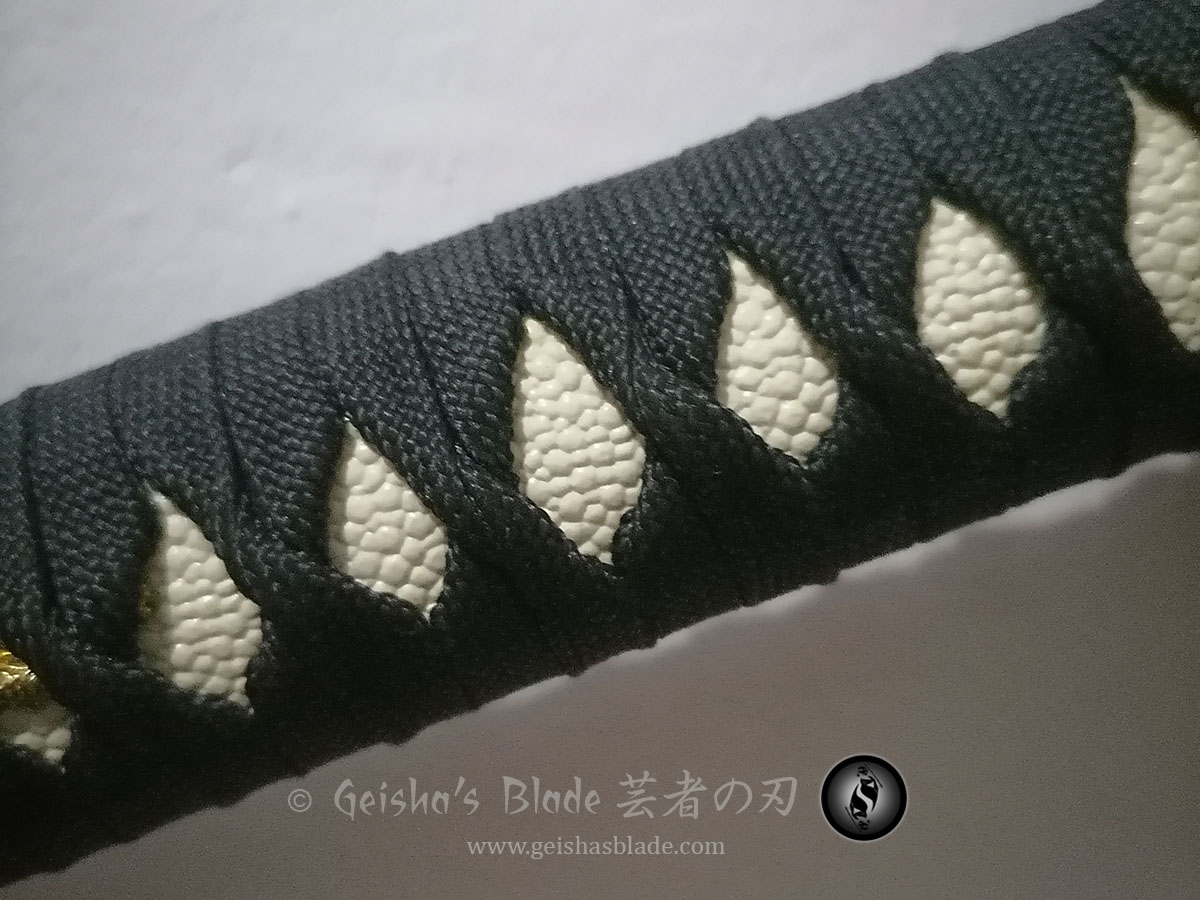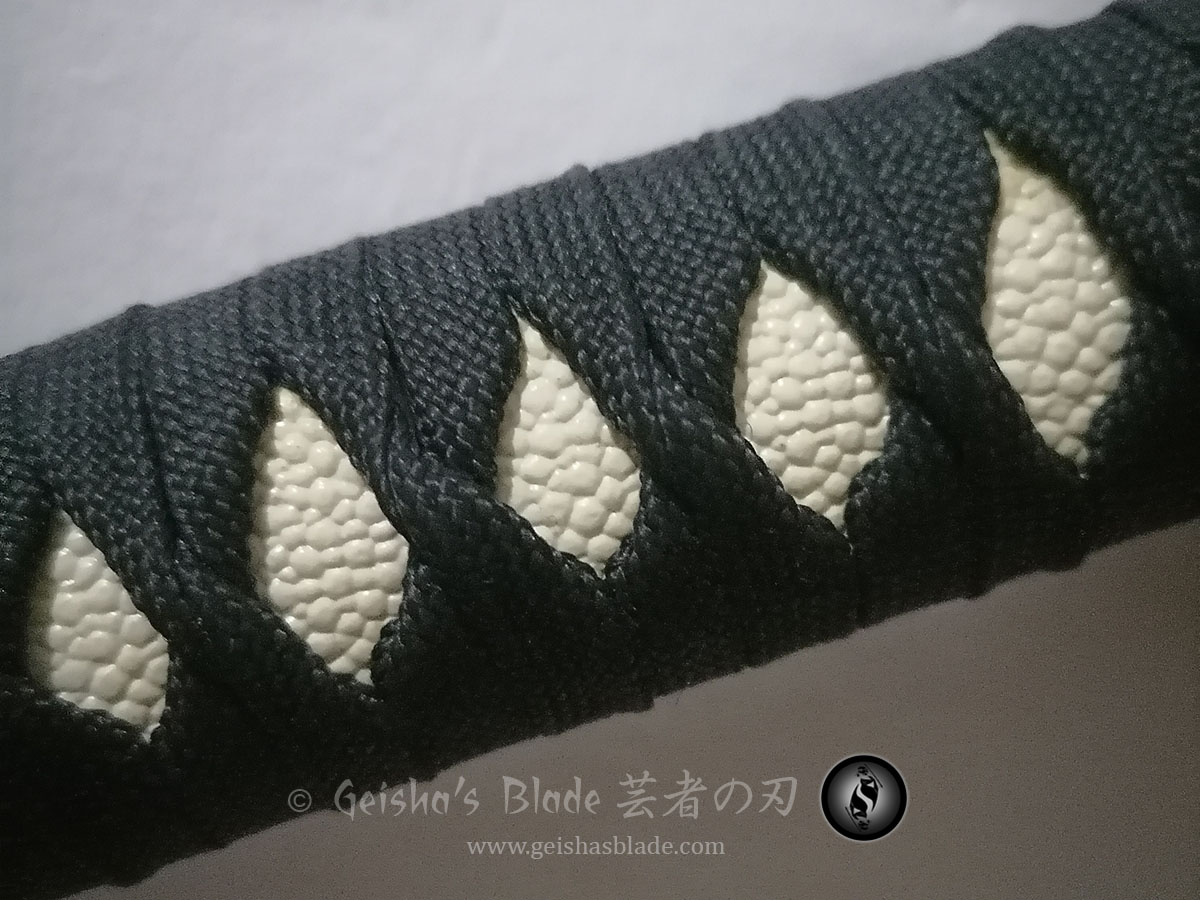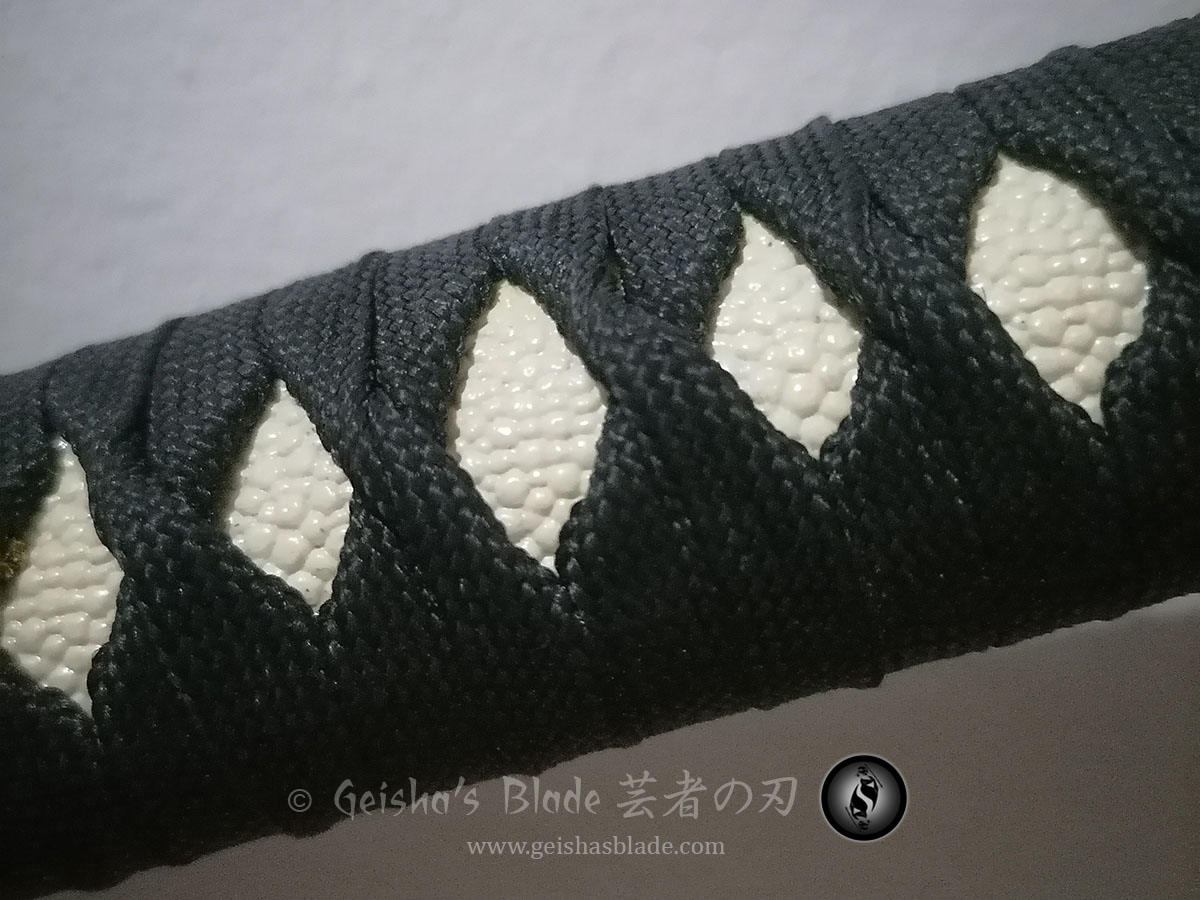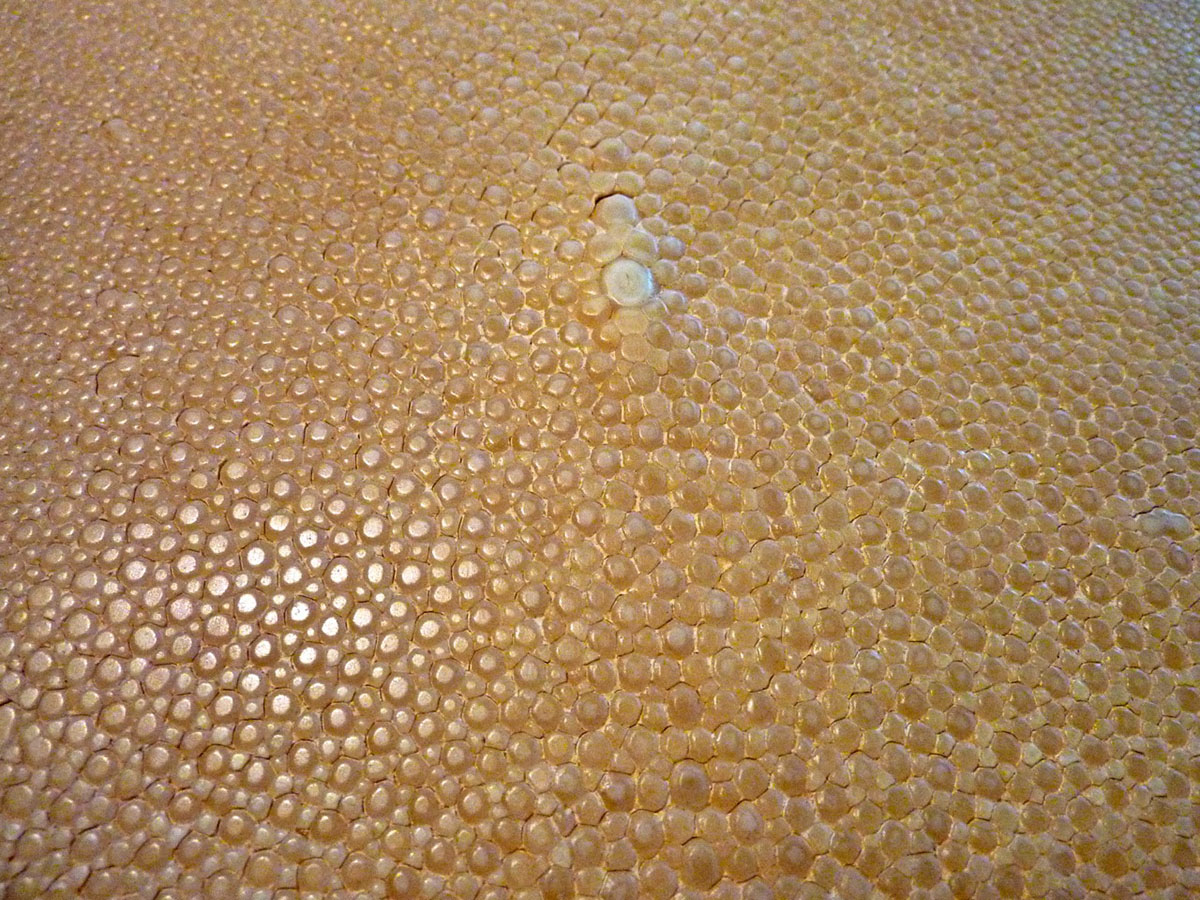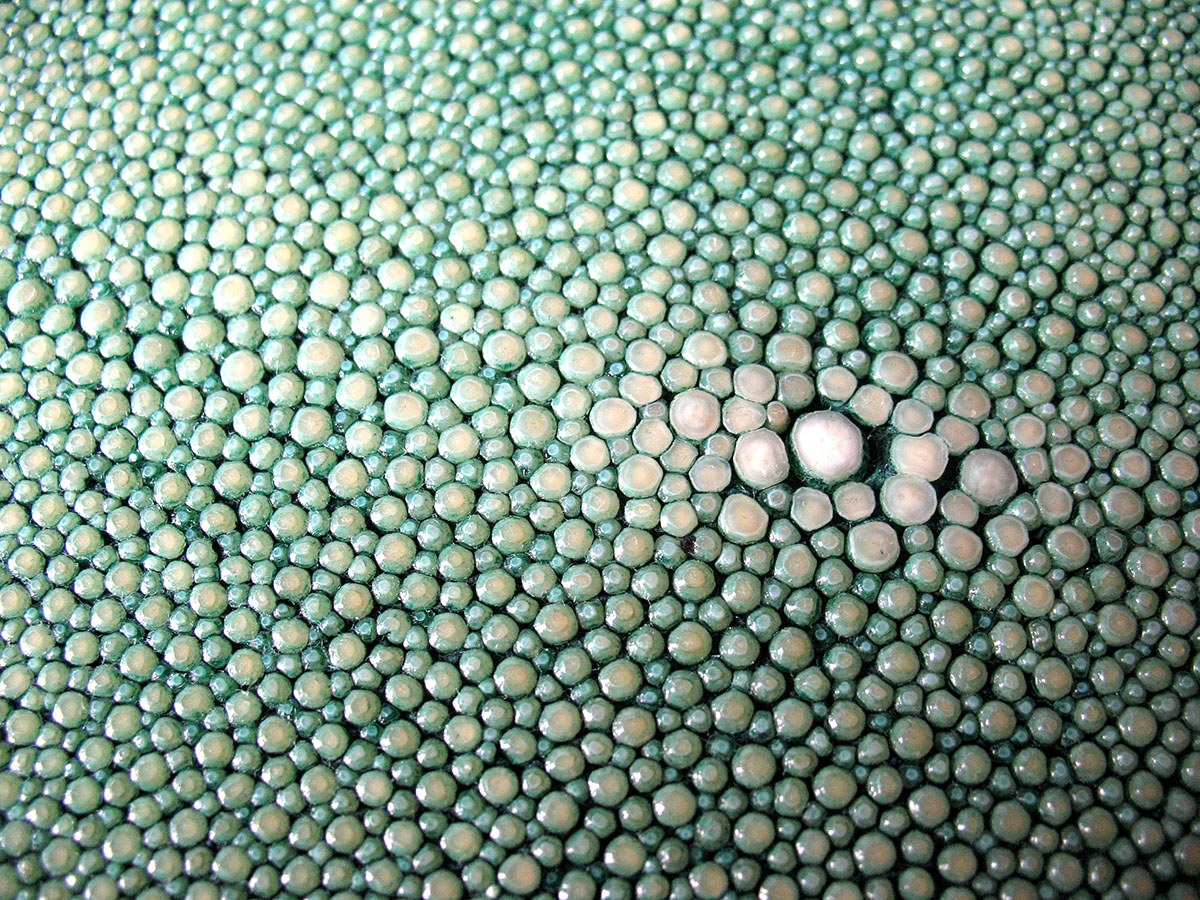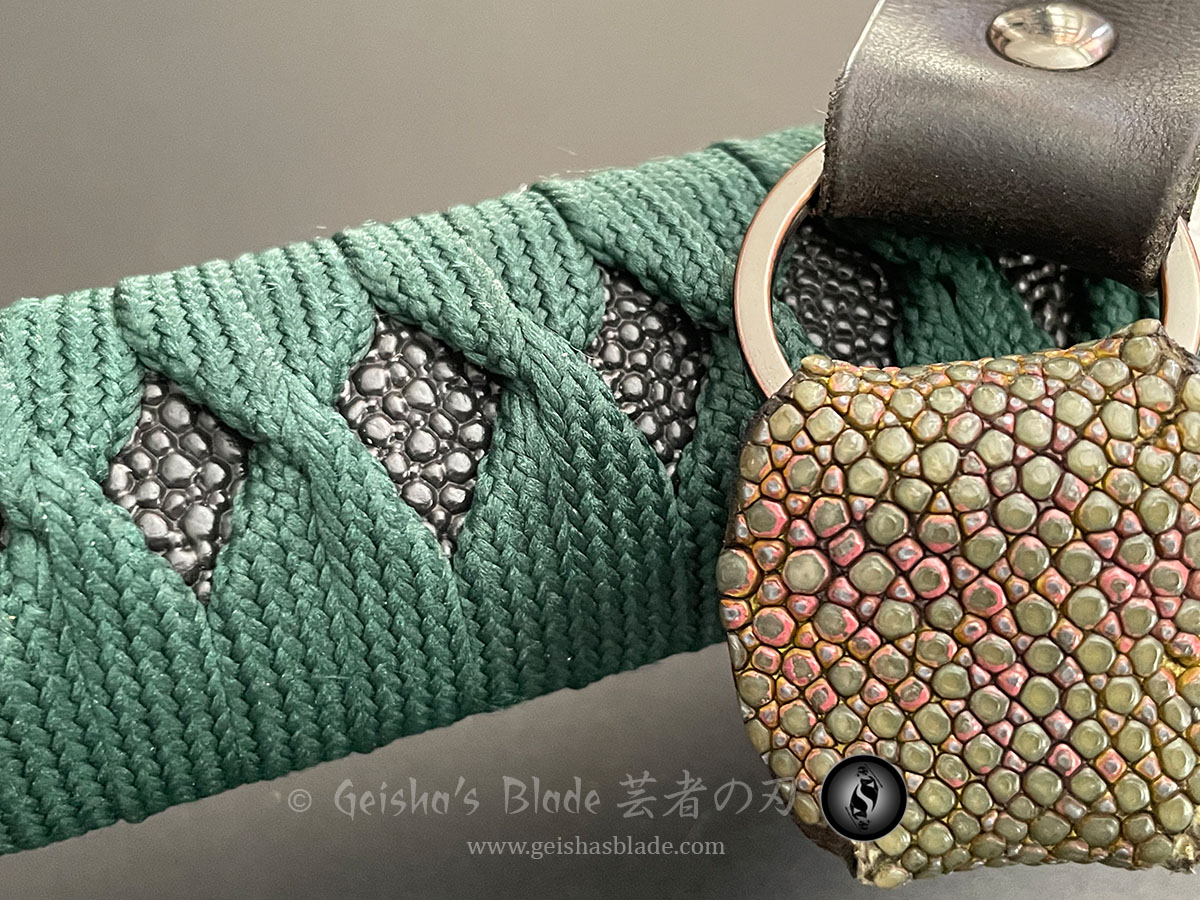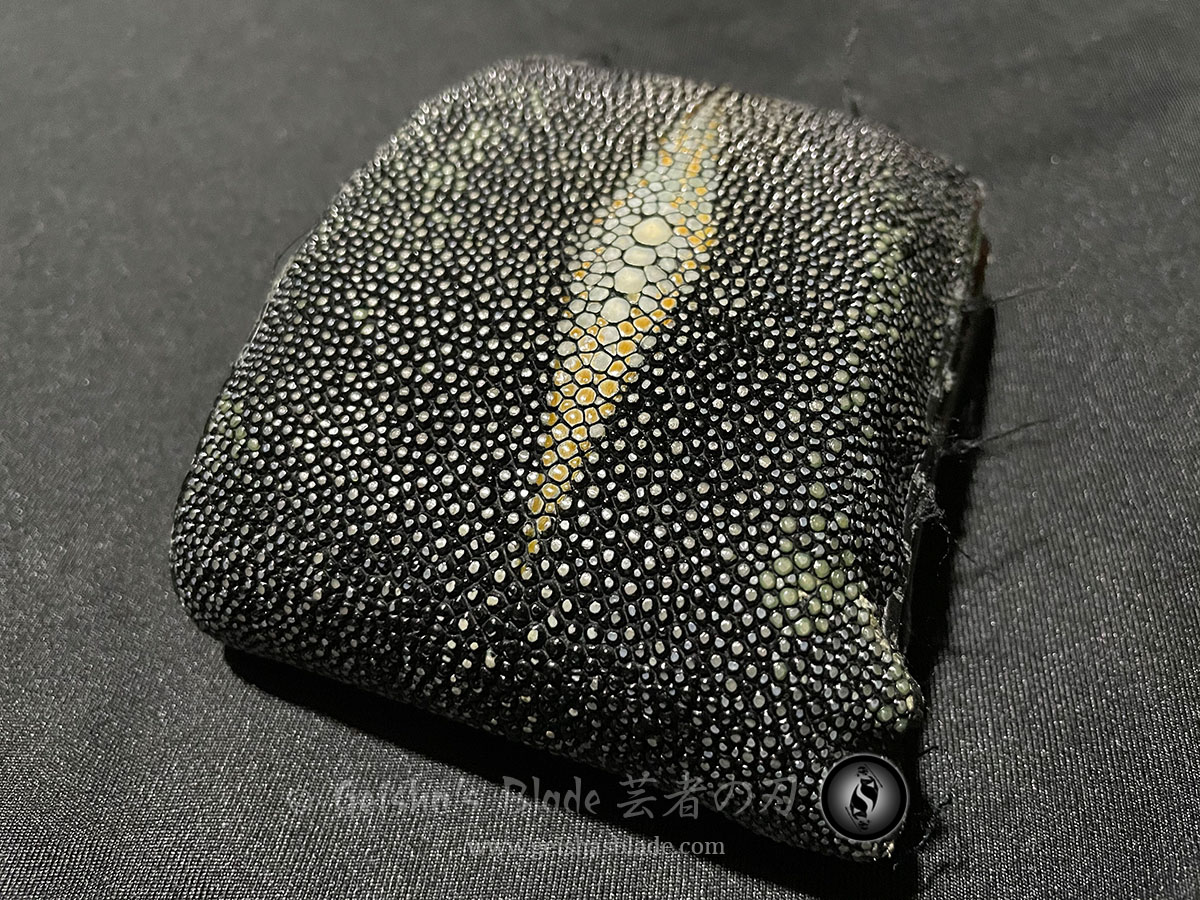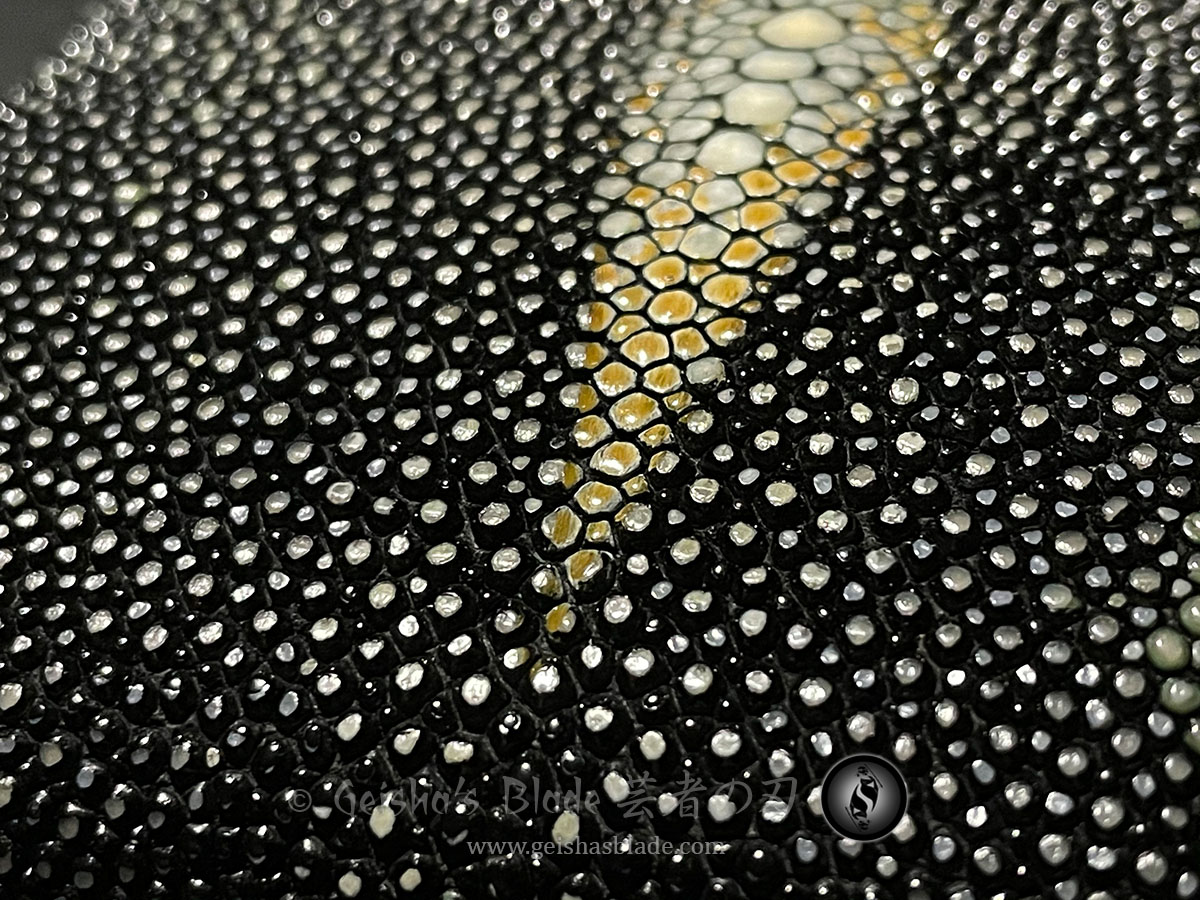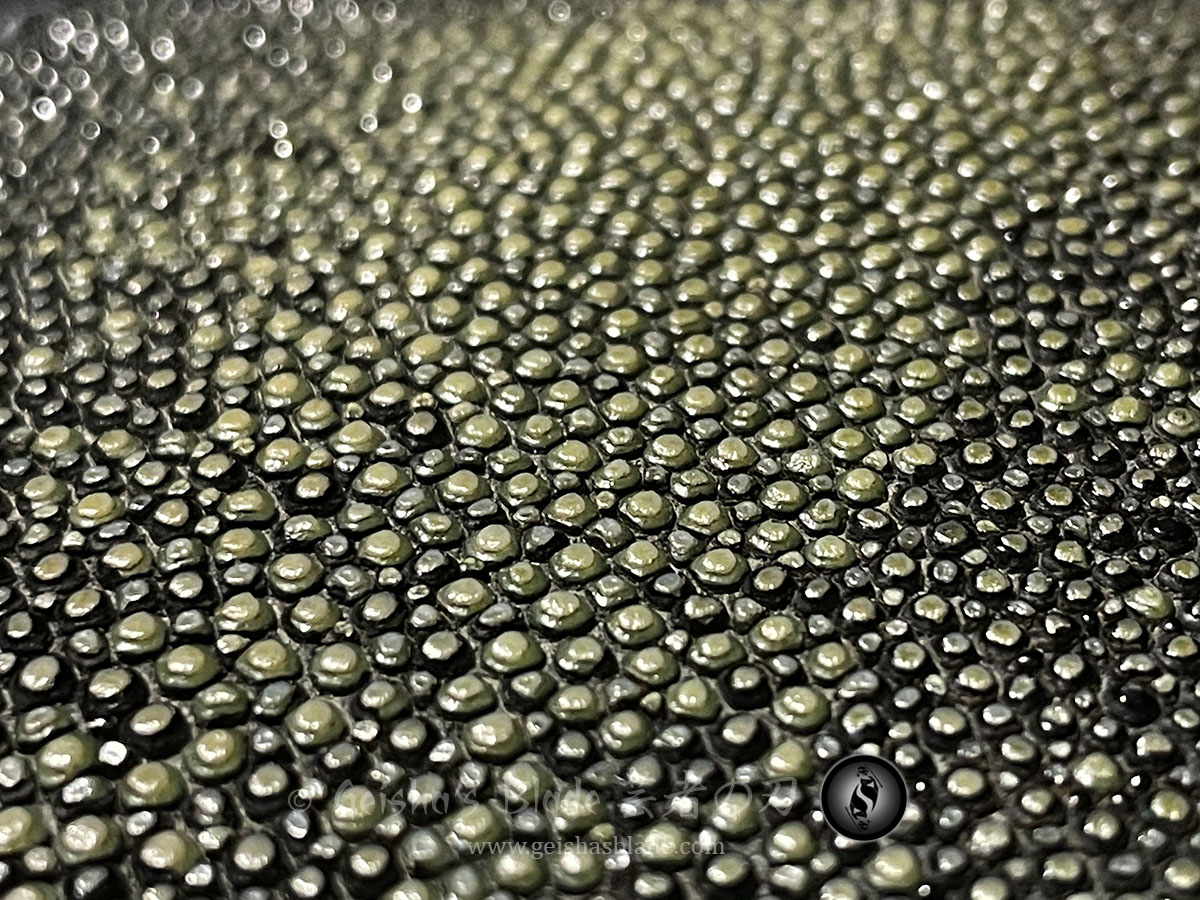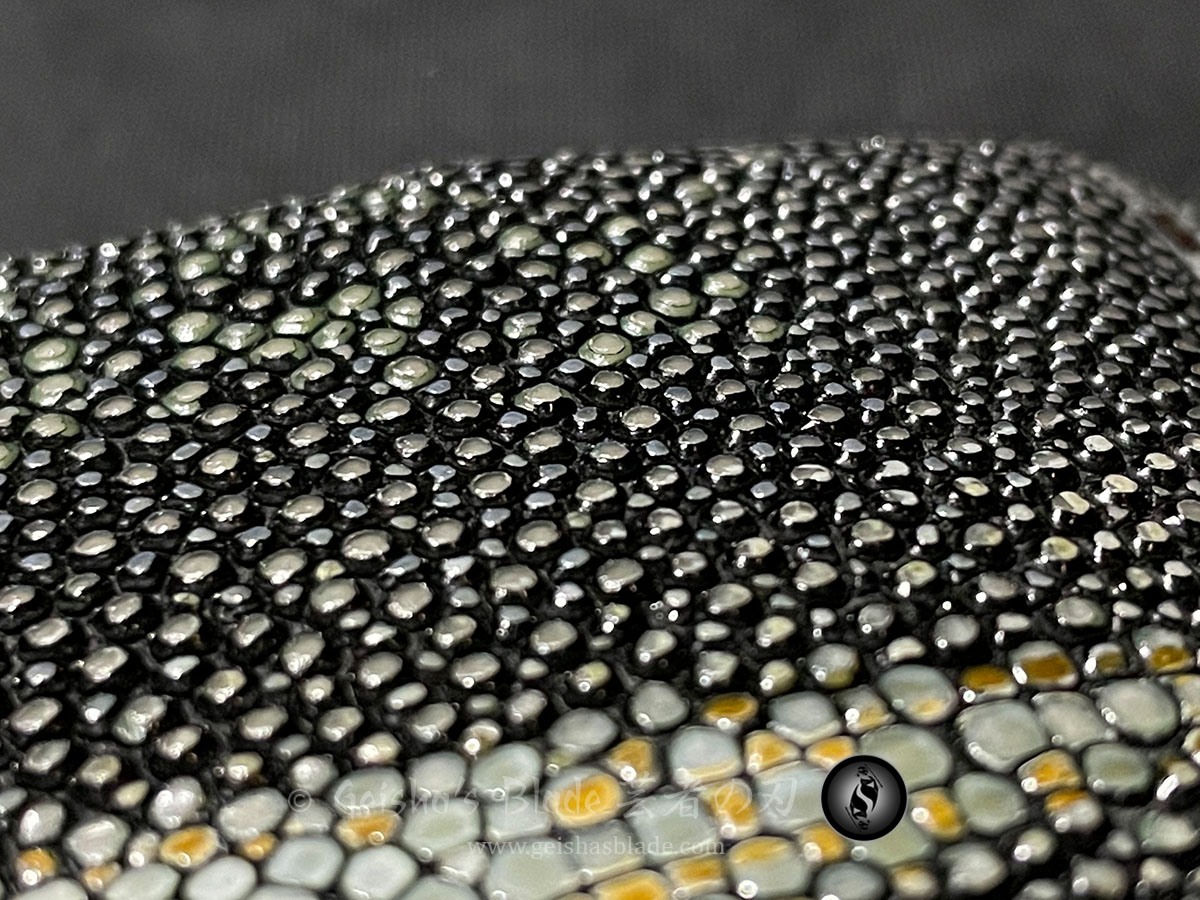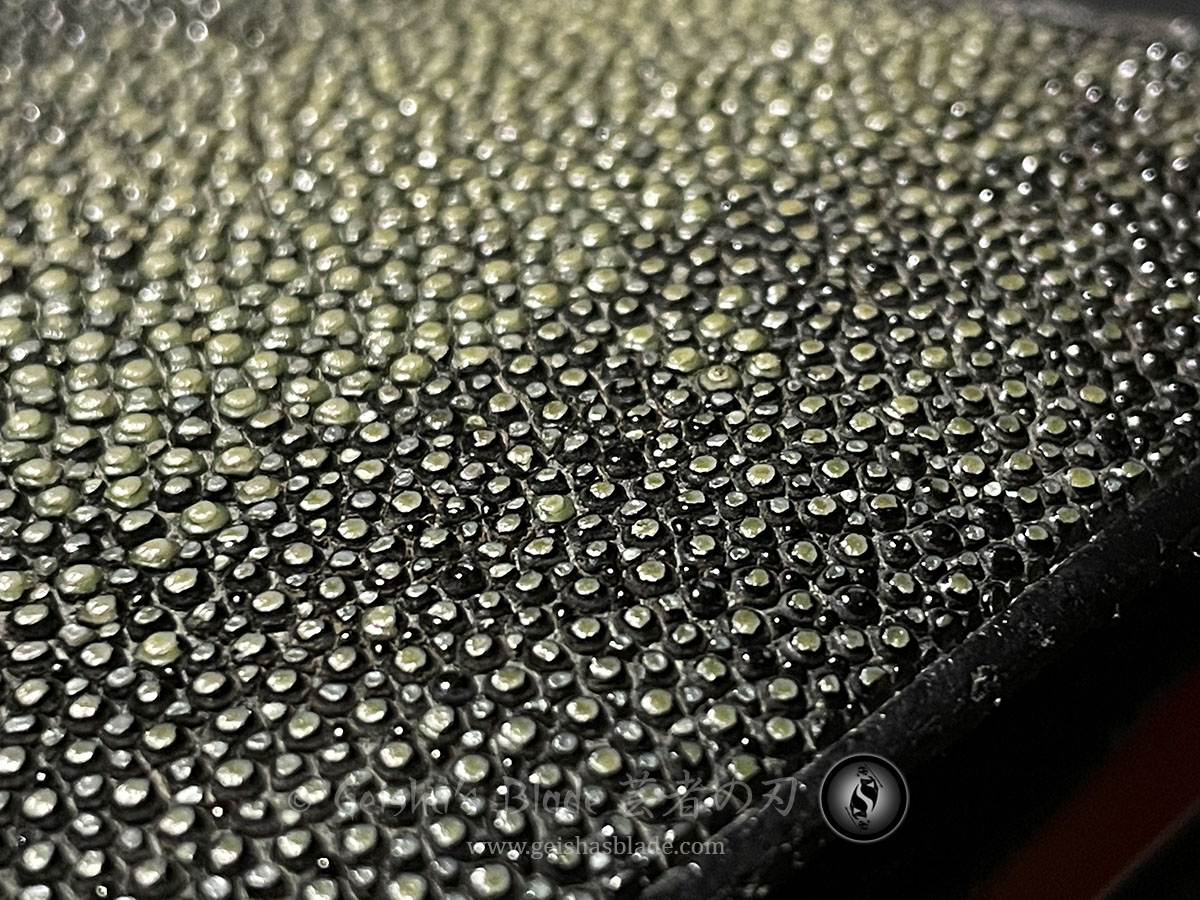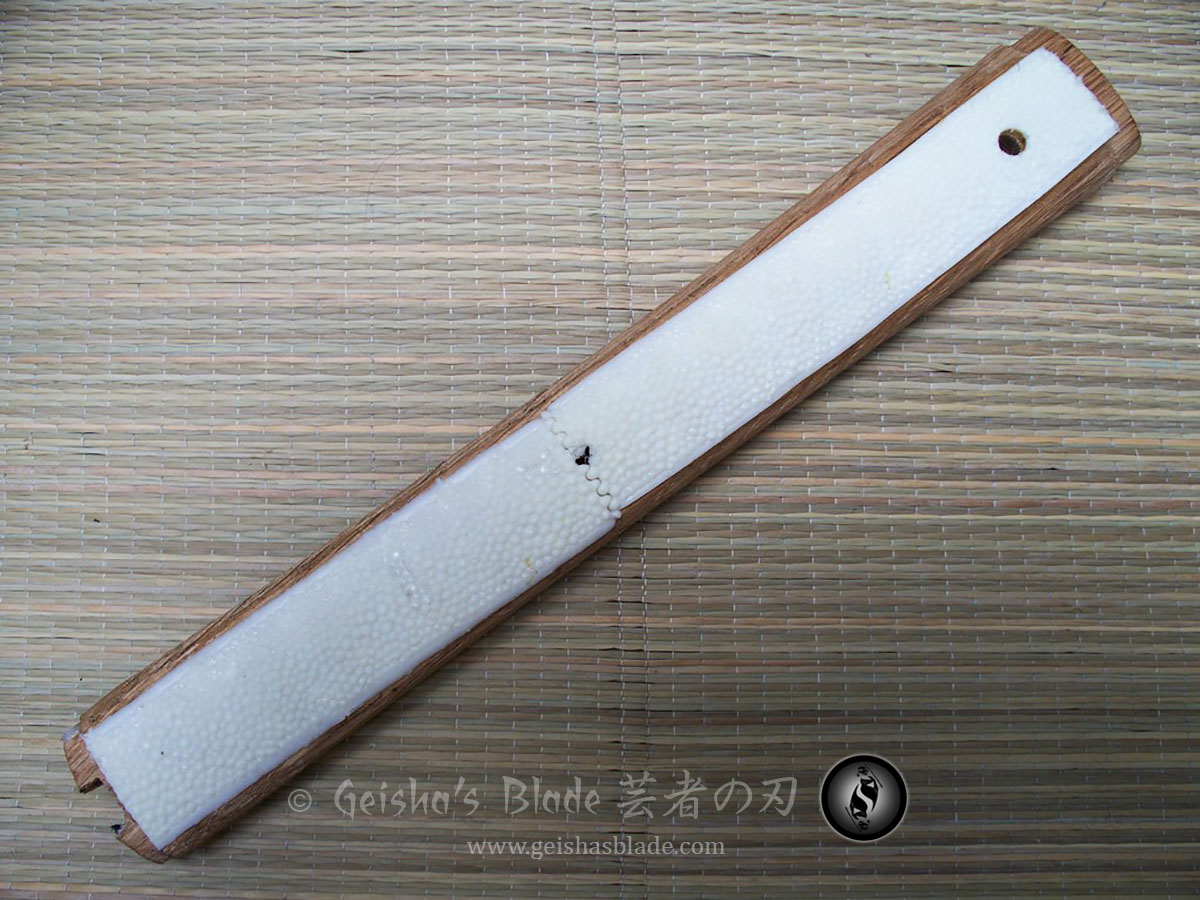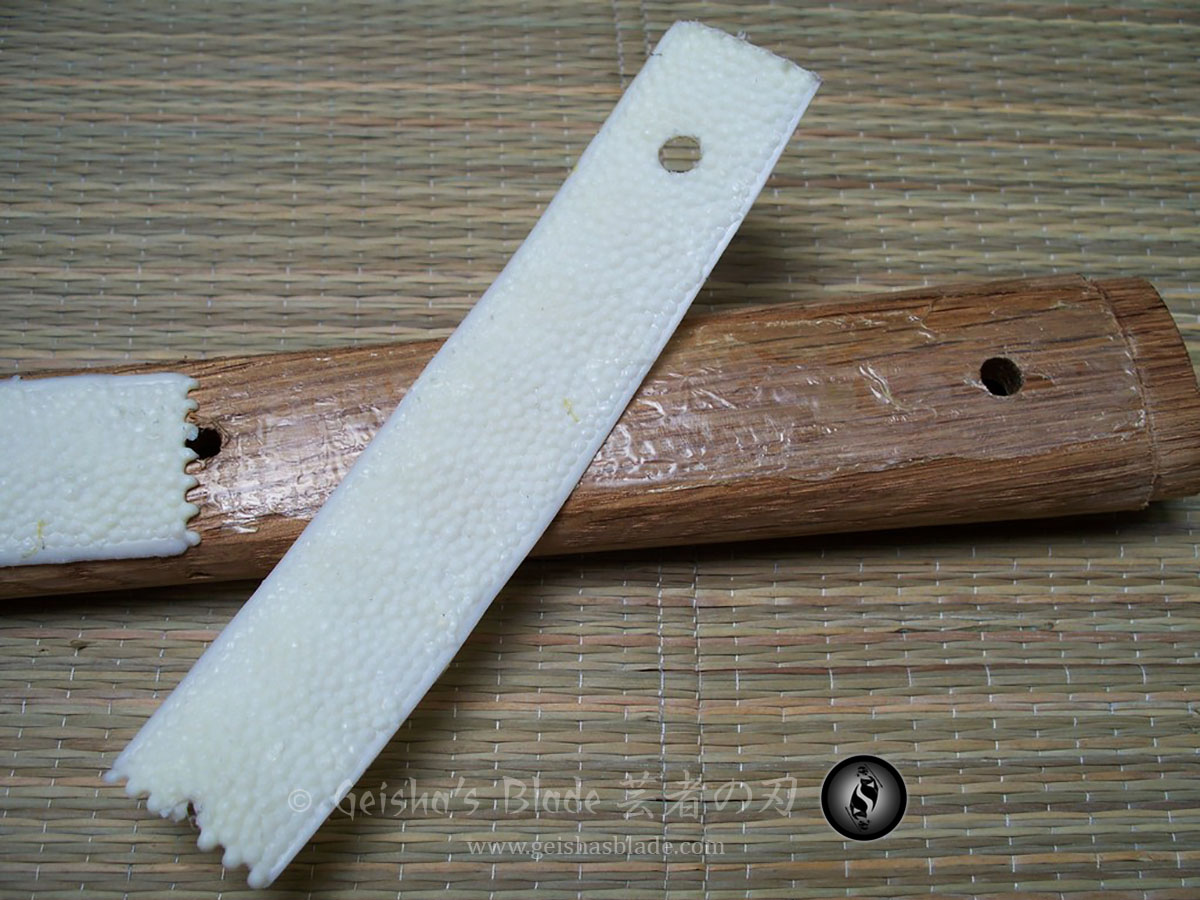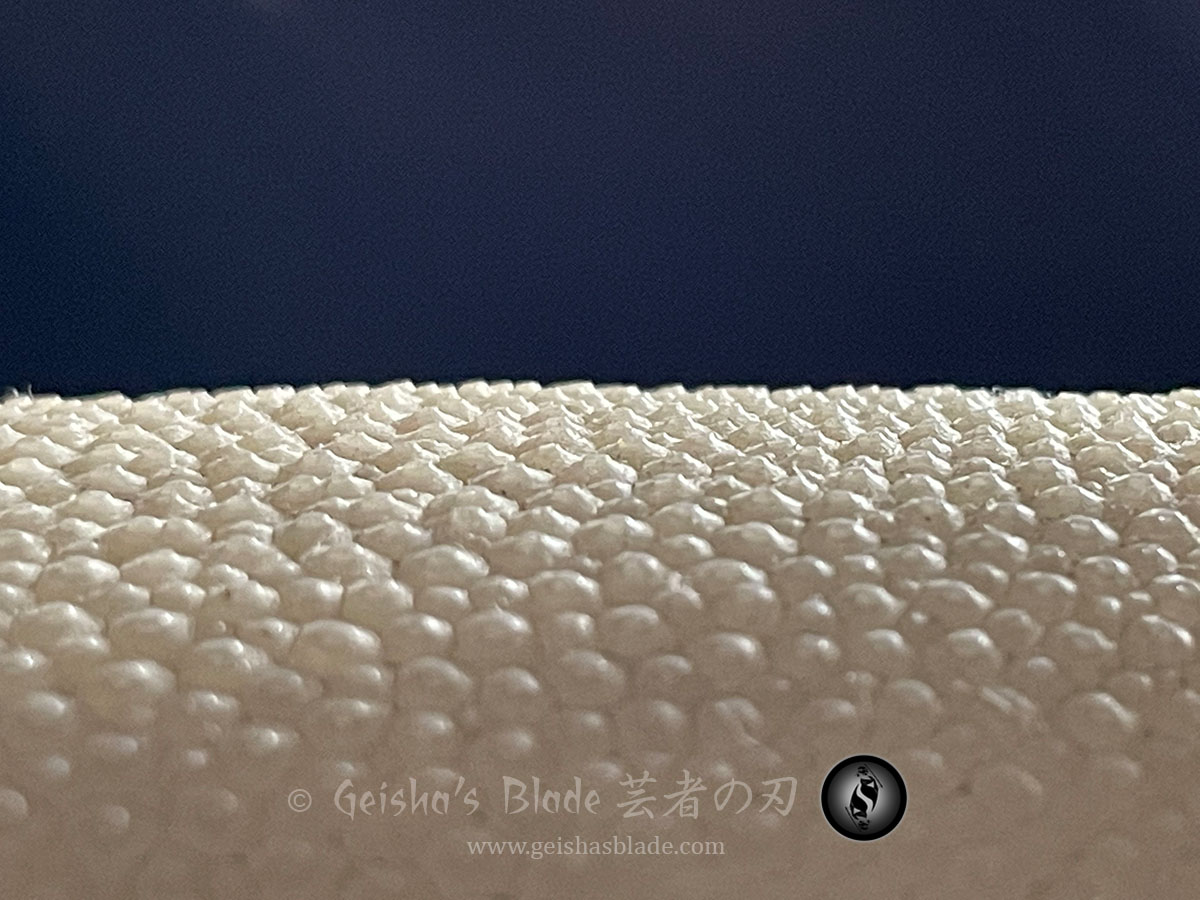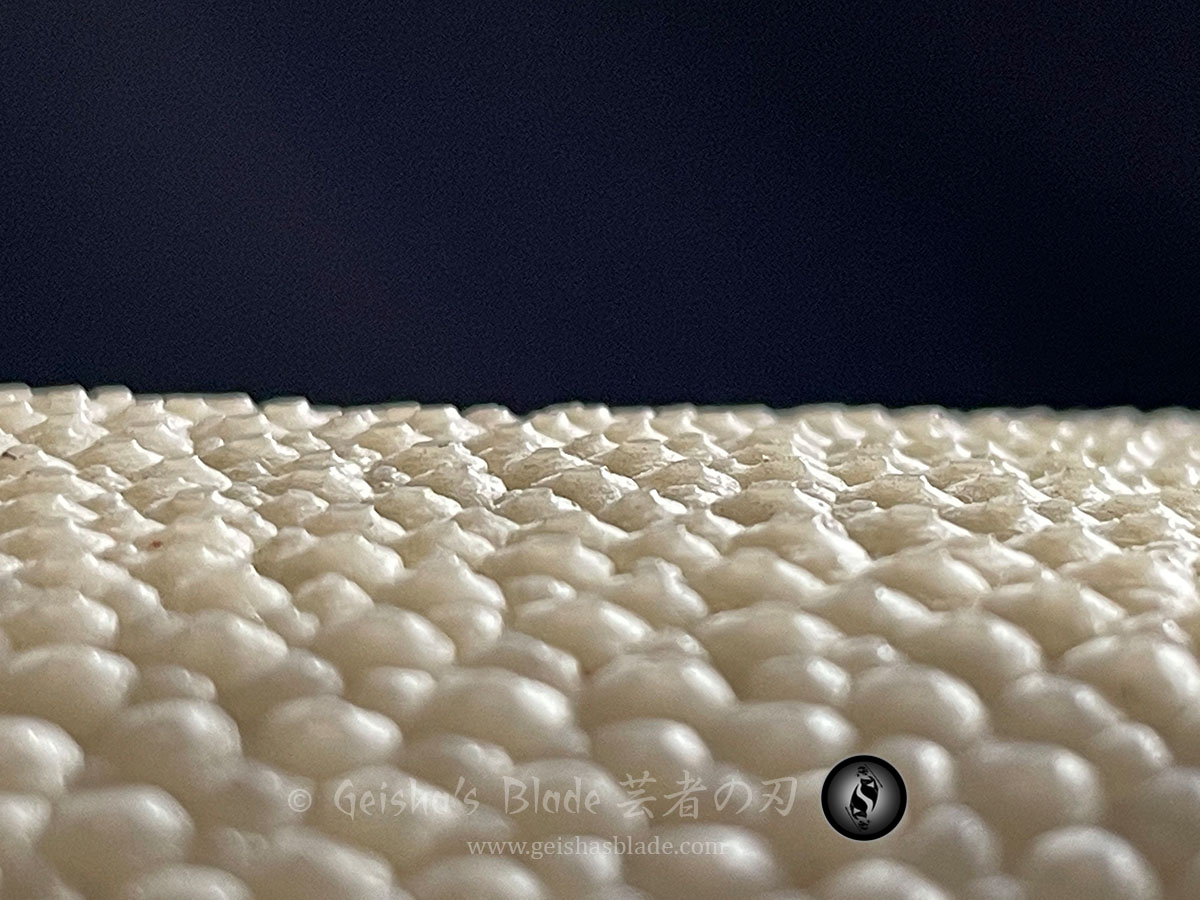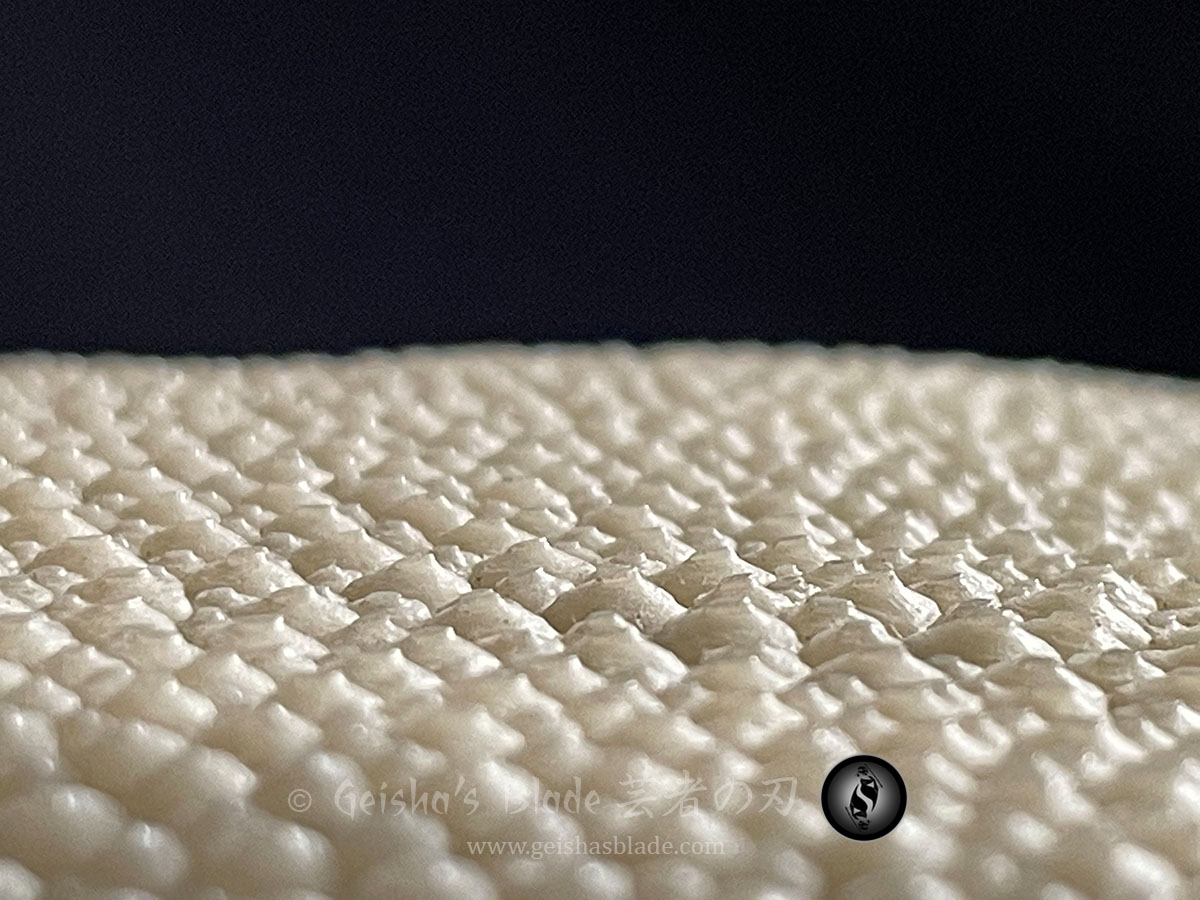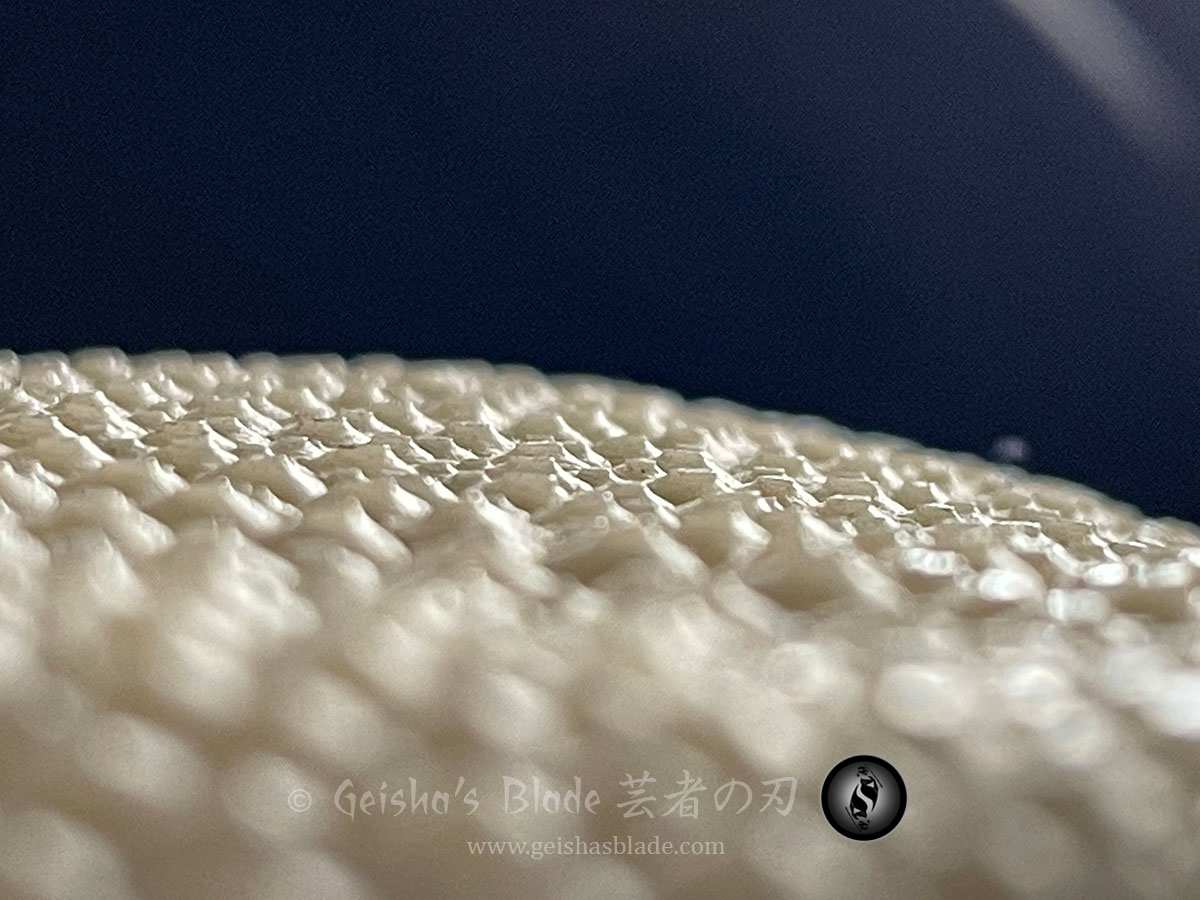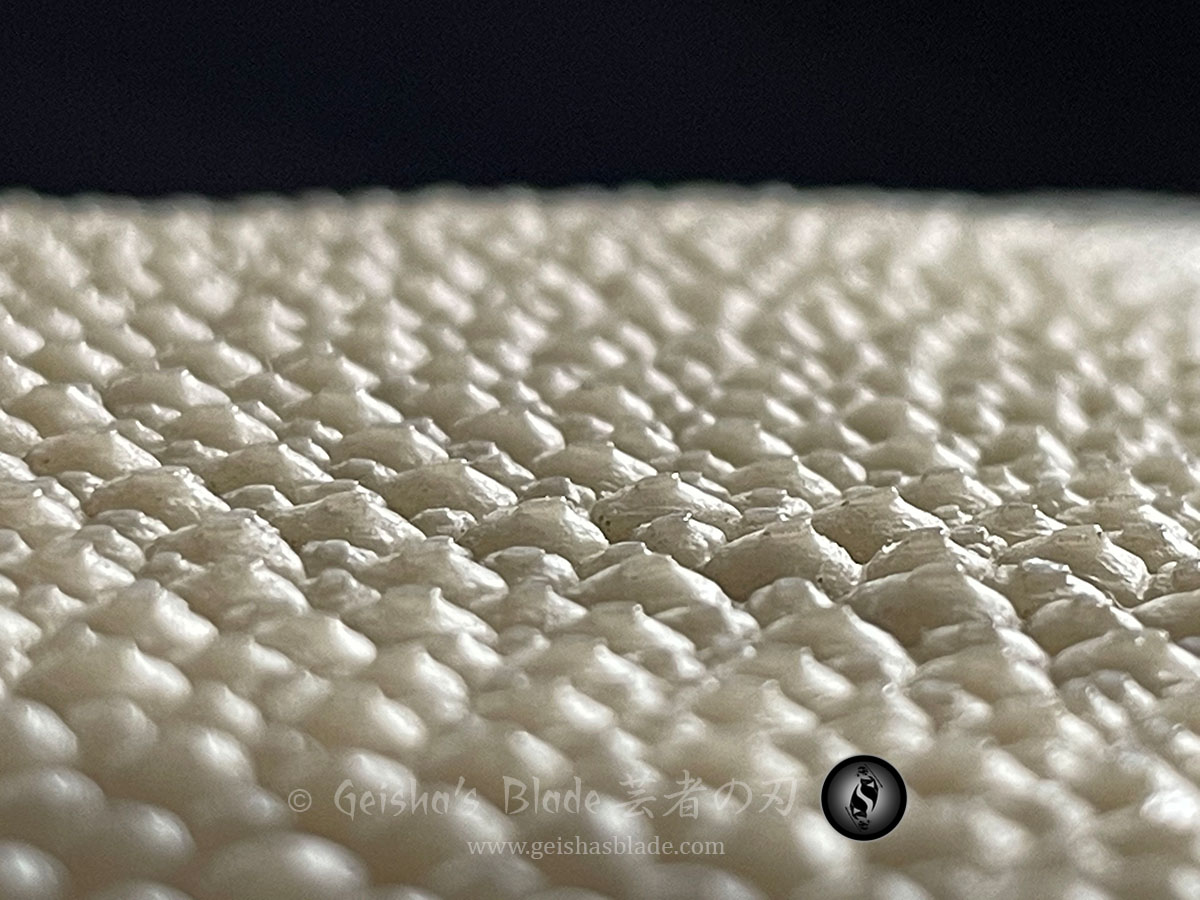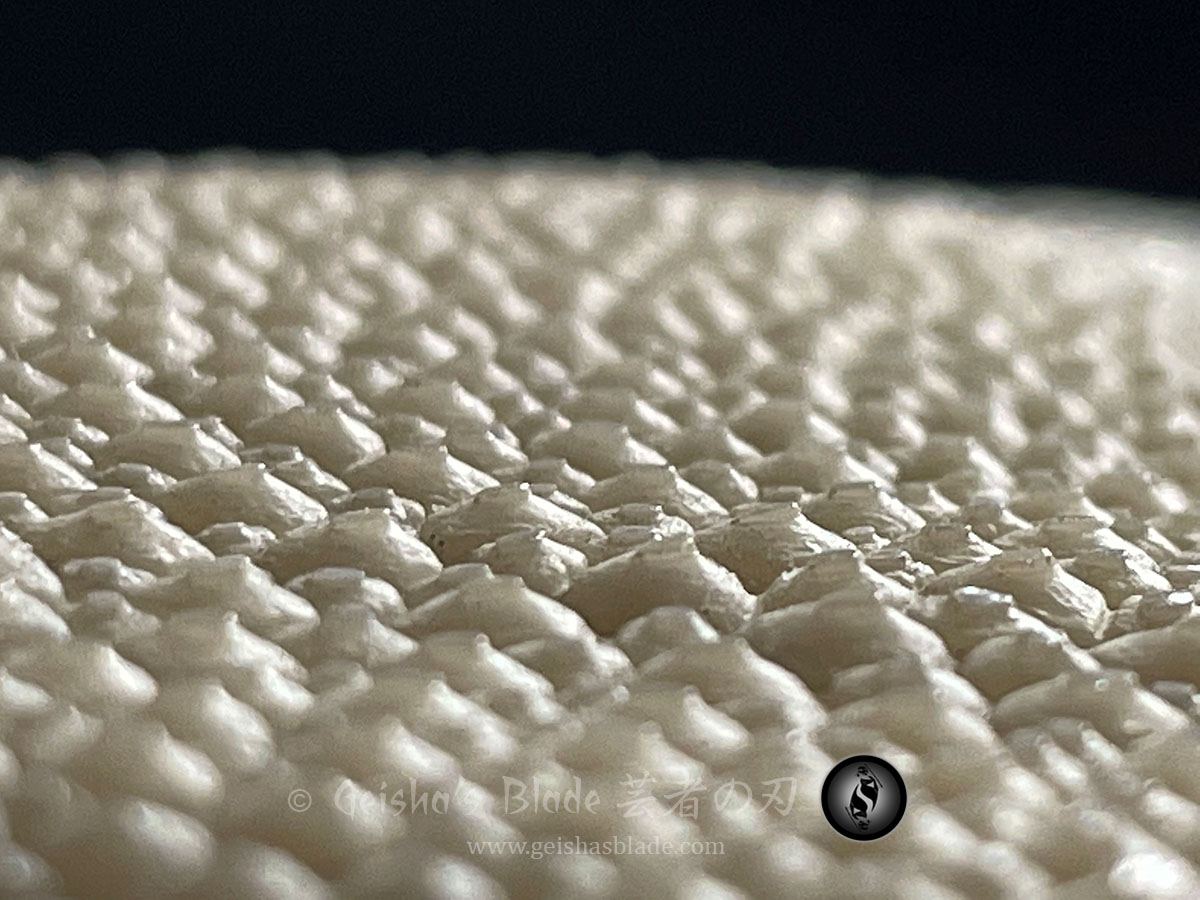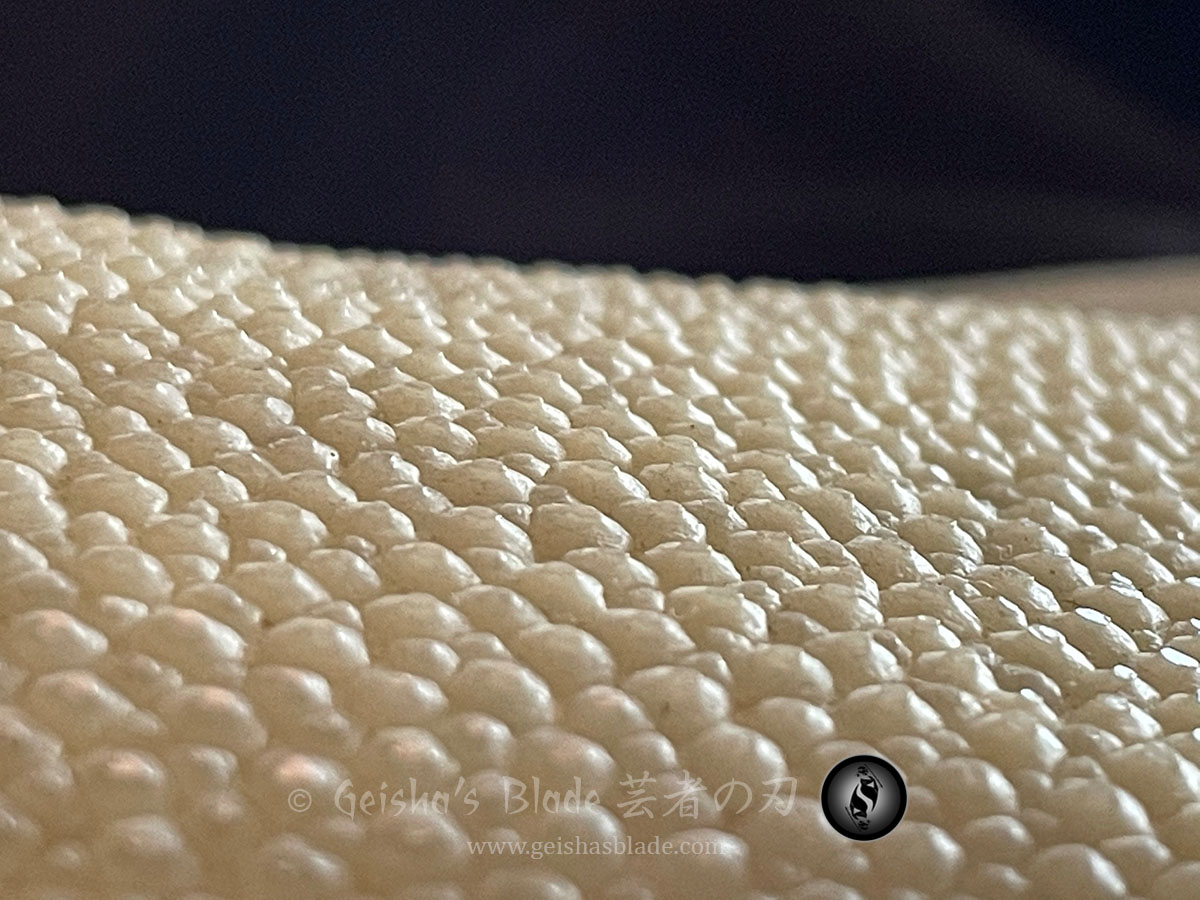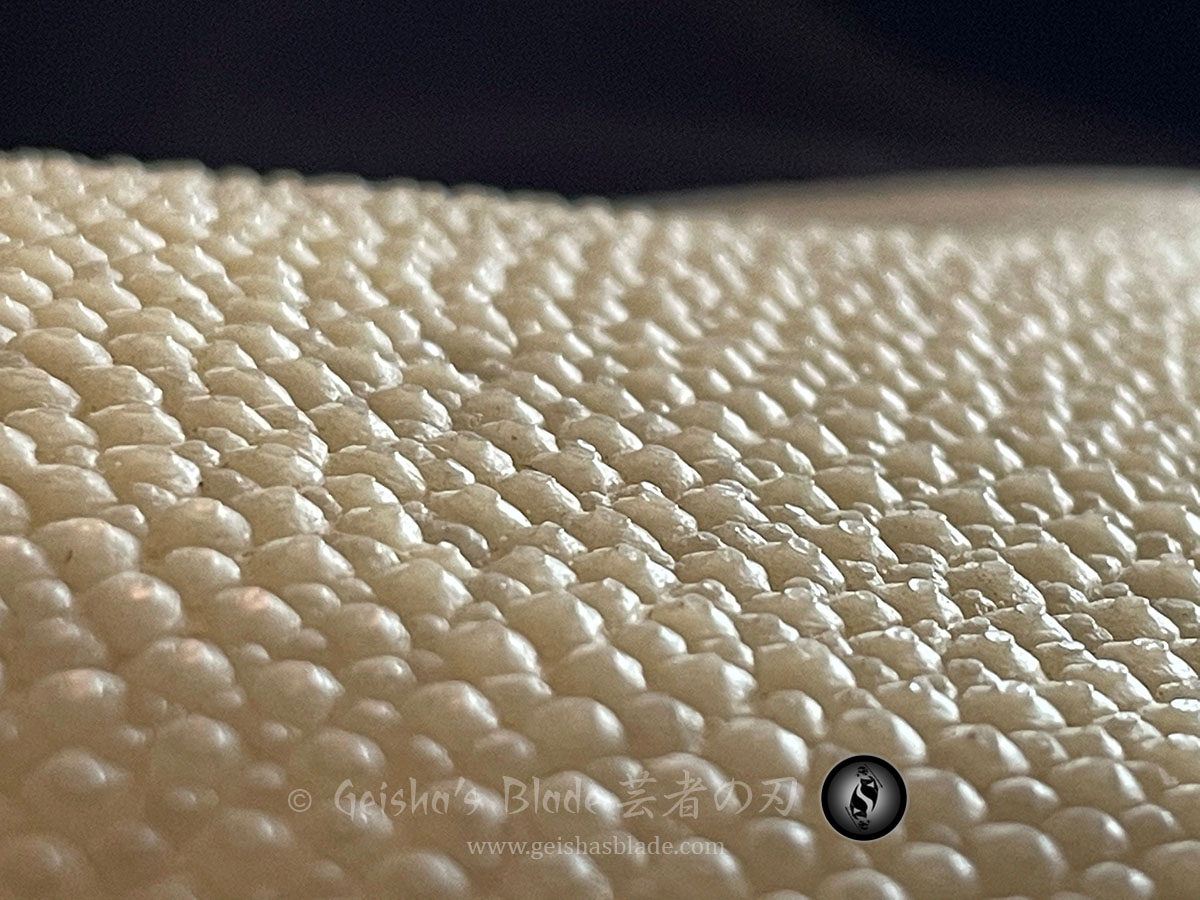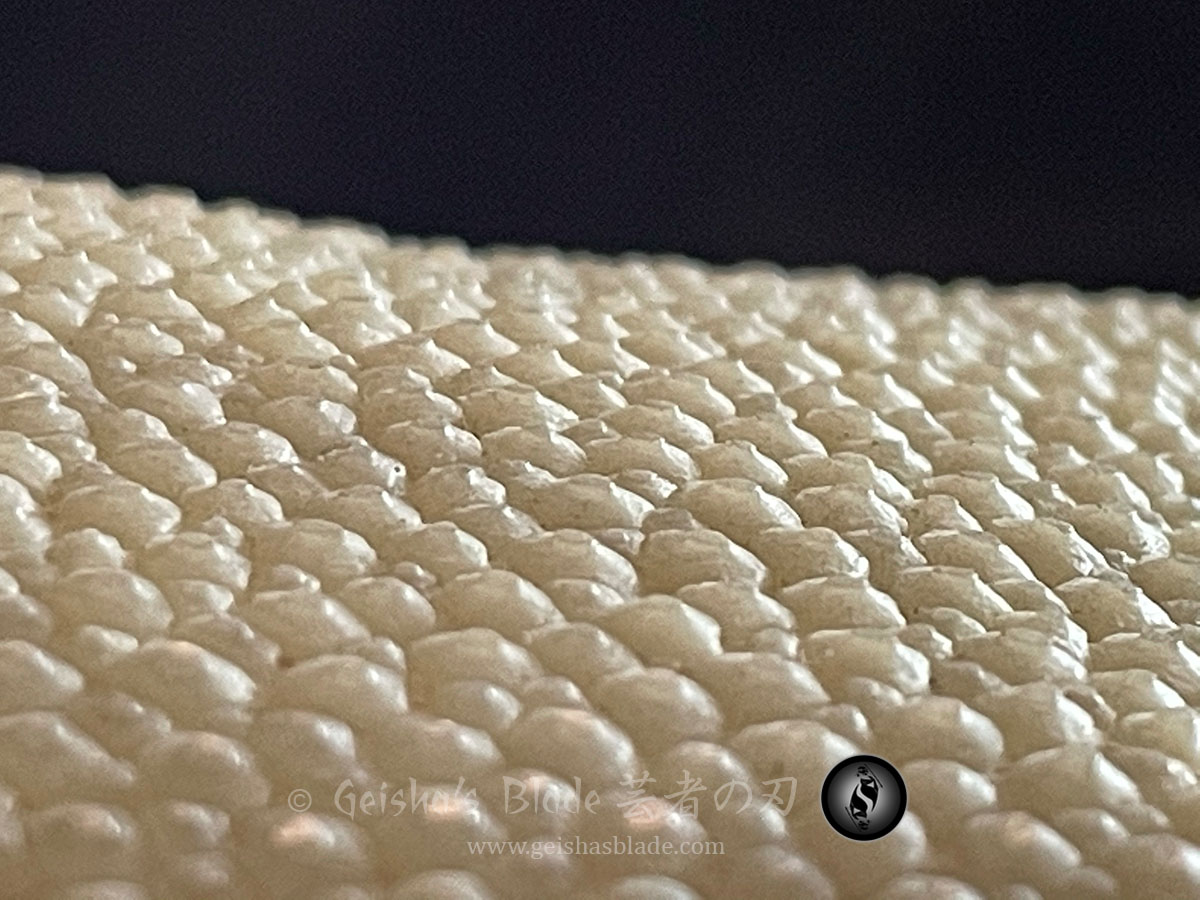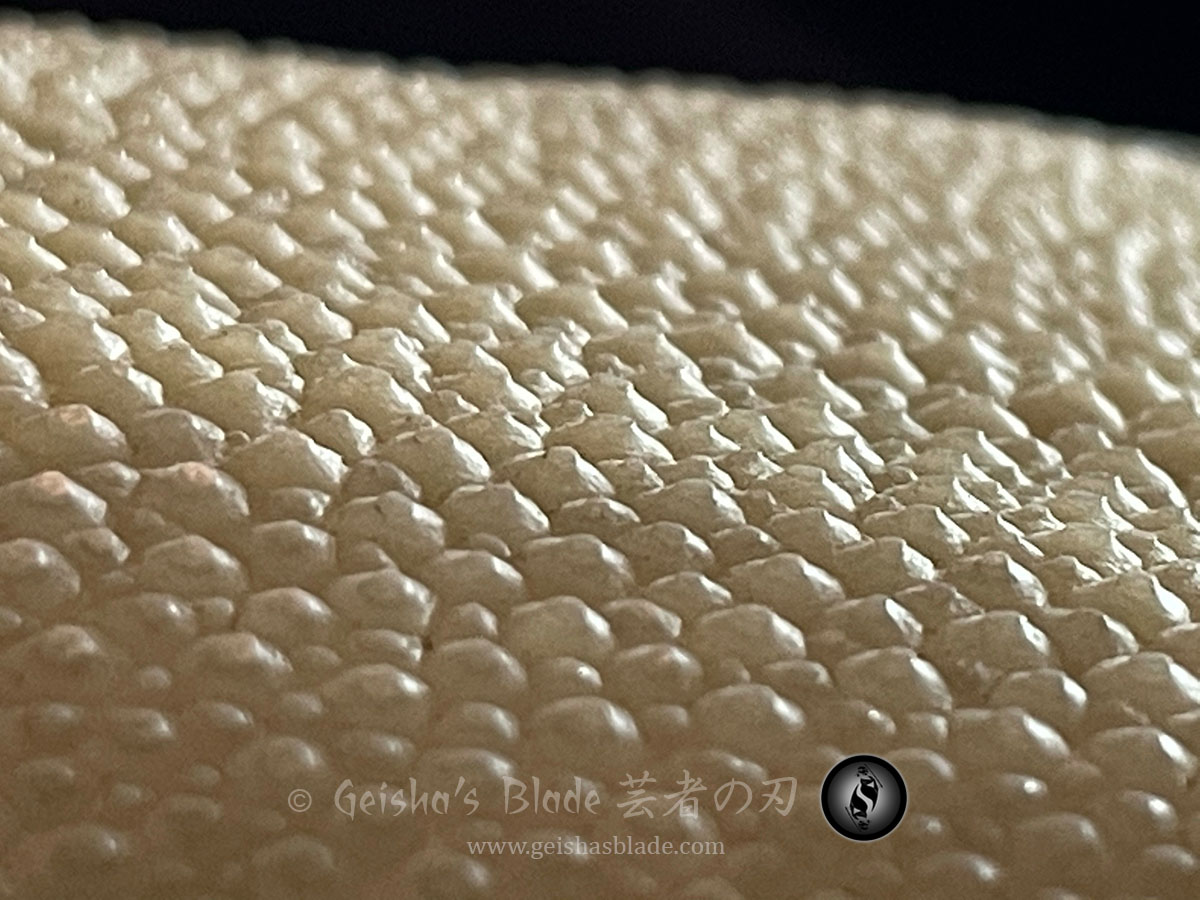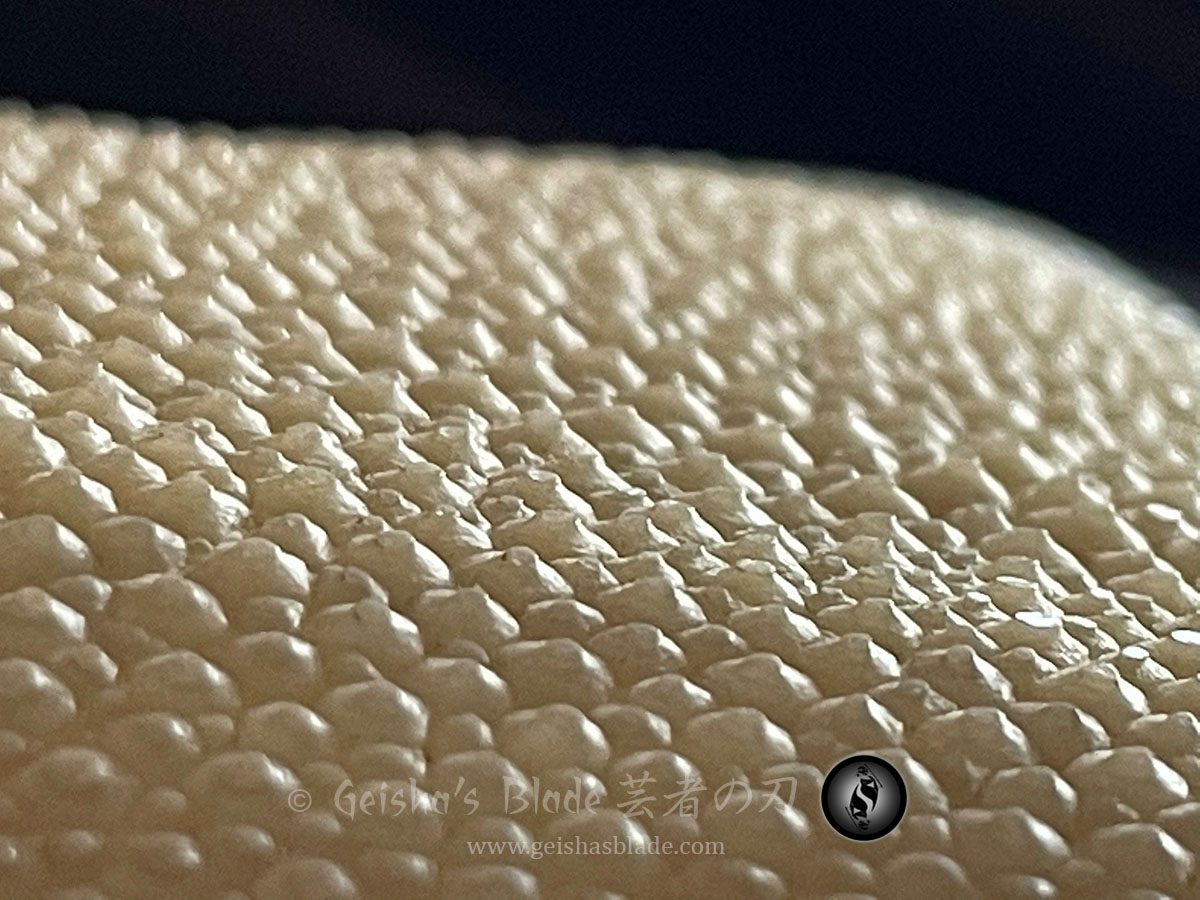Are you really getting what you’ve paid for on a “high quality hand forged katana”?
You can see a lot of hand forged katana being sold online priced over PHP 10,000 that are labeled as “high quality”. But are they really high quality? We’ve seen a lot of swords that are advertised as “high quality clay tempered T10 or 1095 katana”, but when you look closely, the samegawa (ray skin) on the tsuka are fake or synthetic.
There’s nothing wrong in using fake or synthetic ray skin, provided you’ve paid the right price for the sword, and they still look good. We use synthetic ray skin on our machine made swords which are purely for display or decoration, because using a real ray skin, will increase the price. They still do the job in making decorative swords look real and you don’t have to spend too much money on it.
The issue here is that there are a lot of sellers who deceive their customers (or they probably don’t know the difference between a real and fake ray skin). They won’t say if the ray skin on the tsuka of the swords they’re selling is real or synthetic, they just indicate that it’s painted or dyed. There are some who indicates it’s real, even though it’s synthetic. They think you wouldn’t know the difference especially if it’s your first time buying a real katana.
It’s usually the first time buyers who gets fooled.
That’s why we wrote this blog with a lot of photos to help you train your eyes in spotting real from fake ray skin. Here at Geisha’s Blade, we indicate exactly what materials are used on our swords and provide clear and detailed photos, so you’ll see the quality of our swords. No sugar coating.
We’ll start off with this sword made in Japan. Yes, it’s made in Japan but it’s not a real sword. This is just a ‘mogito’ or imitation sword. You’d usually see this type of sword being sold at Japan surplus shops around the country. Some are reasonably priced, others are overpriced. The blade of a mogito is made of low quality aluminum alloy and then chrome plated. The handle is made of molded plastic. Below are photos to help train your eyes.
The shape of the nodes on the ray skin of this molded plastic tsuka are uneven: some are round, some are shaped like a diamond, etc. They’re also a bit “spiky”, and the gaps/distance between each node are too wide or far apart.
To learn more about mogito, please visit the link below:
https://geishasblade.com/blog/anatomy-of-a-cheap-samurai-sword-made-in-japan/
Here is a tsuka of one of our hand forged swords. This has a real samegawa on the tsuka. Look closely to help train your eyes.
A tsuka of another one of our swords, a tanto actually. This one is painted off-white.
Have you already noticed the similarities and differences of the samegawa of the non-painted, painted, and the molded plastic version?
More painted samegawa on the tsuka of our hand forged swords, this time they’re painted black.
Next is from one of our anime swords which has a fake black ray skin.
Here’s a side by side comparison of a real ray skin that’s painted black and a fake black ray skin. They look very similar. But look very closely and take note of the differences.
Did you see the differences? Like the molded plastic tsuka, the shape of the nodes on this fake black ray skin are not uniformed. They still look nice, but not as nice as a real one. However, this one is missing the “spikes” on top of the nodes. We mentioned earlier that the ray skin on the molded plastic tsuka is a bit spiky. If you’ve carefully studied the photos of the real samegawa earlier, you may have notice something above the nodes. Real samegawa have little spikes on top. From above, these spikes look flat. We’ll go into more details about these spikes later on. Even when painted, the gaps/distance between the nodes on the real samegawa are still deep. Unlike with the synthetic ray skin, it’s shallow. The nodes on the real painted samegawa are raised, while on the synthetic ray skin, they’re smooth and a bit rounded.
Here’s another fake ray skin from one of our sword-like-objects. It looks exactly like the black fake ray skin, but this one is white.
The material is like a rubbery plastic, you can easily indent it with your fingernail.
Then there’s this material called “shagreen”. This is real samegawa that’s commonly used in fashion and furniture. These are chemically treated leather. They’re usually used as belts, wallets, keychains, upholstery, etc. The whole skin is very pliable and has a leathery underside. Real samegawa is hard and feels like a very rough dried coral, and it becomes pliable when soaked in water. The nodes on the shagreen are still hard, but they have been polished smooth removing the little spikes on top.
Here are some photos of dyed shagreen grabbed from the internet.
Thailand sells a lot of accessories made of shagreen. Here’s a keychain and wallet we bought in Bangkok years ago.
You can see that the nodes are smooth as the spikes have been polished out, but you’ll still see some remnants of it on top of the nodes.
Here’s another version of a plastic samegawa. This is actually from a well known sword brand. When we bought this sword over a decade ago, it wasn’t indicated in the product description that it was plastic. It was only stated that his was their “economy katana” with cost effective fittings. Good thing we didn’t pay much for it back then. We ended up customizing this sword replacing the plastic samegawa with a real one, re-shaping and re-wrapping the tsuka, and replaced the fittings. It was a nice project sword.
Here’s a close up video of the nodes of a real samegawa.
Here are some close up photos of the nodes of a real samegawa. From above, they look flat.
But if you look closely from the side, you’ll see the spikes. They’re like a plateau, but one side is raised.
The spikes on top of the nodes of a real samegawa provide additional grip to the tsukaito (handle wrapping). If a fake ray skin or shagreen is used on a tsuka, the tsukaito will easily slide and will get loose. Synthetic ray skin and shagreen still looks nice, but they’re best to be used on non-functional decorative swords.
Here’s a video showing the different kinds of ray skin.
Please note the color of the samegawa is not a basis to check if its real or not. Samegawa is usually bleached, that’s why it appears white. With age, it becomes yellowish. Then there are some that are painted or dyed. The size of the nodes also varies, some are big, standard size, or small.
Once you’ve familiarized yourself and trained your eyes with the help of these photos and videos, you’ll be able to easily spot a real samegawa from a synthetic one, and help you from being deceived.
You should also note that there are some sellers who are selling “high quality katana” with acid etched hamon, but will say they’re real or natural. They will also say the fittings of their swords are made of brass, but in fact it’s only zinc alloy. Usually these sellers are inexperienced and not really passionate about Japanese swords, they’re just simply out to deceive you and take your hard earned money. But this will be for another post.
Remember, just being very expensive doesn’t make it high quality, it’s just overpriced. Do your research first. Or you can join this Facebook group: Kompletely Katana, so you will learn more about modern reproduction swords. It’s an international group and members there have a lot of experience with swords from different makers made in different countries.
Here at Geisha’s Blade, our mission is to educate, promote, and provide Japanese style swords and armors, its appreciation, usage, and history in the country.

